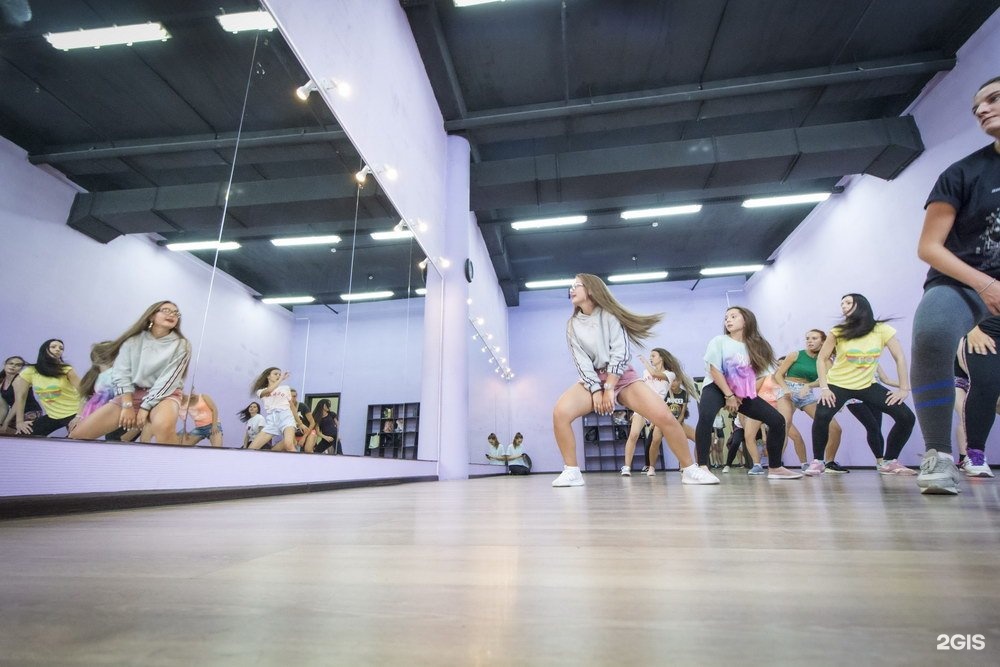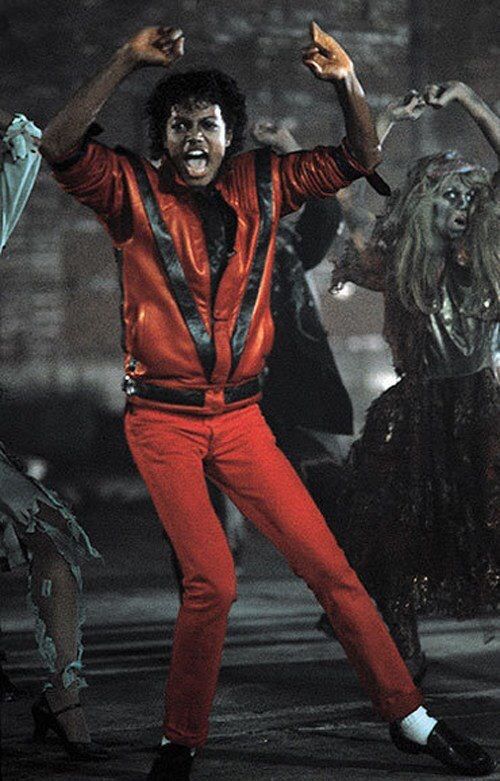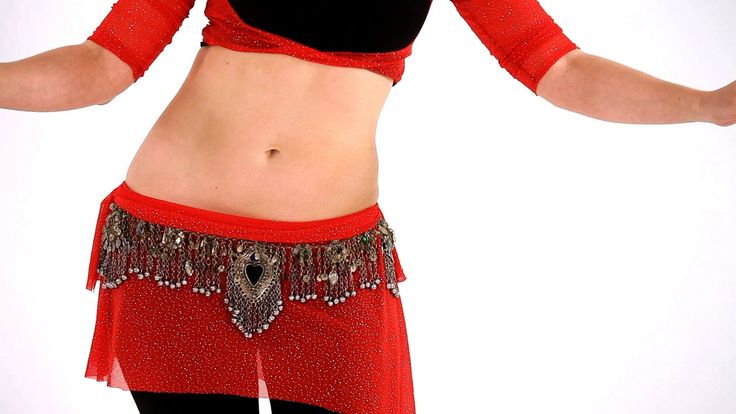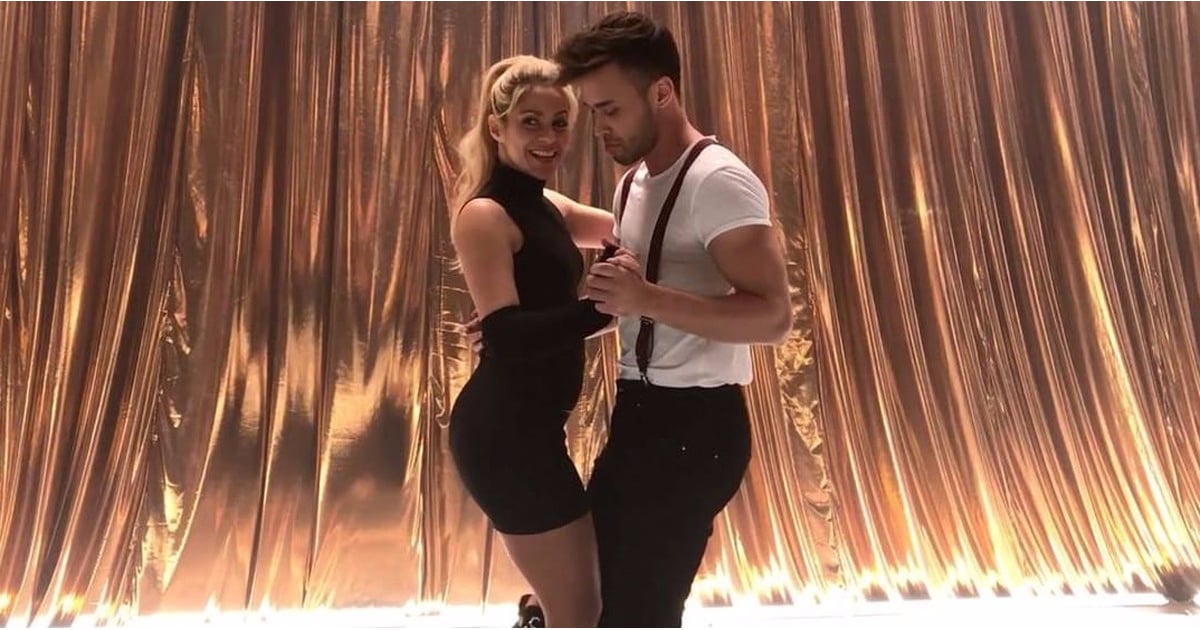How to market a dance studio
12 Ideas to Promote Your Business
Most days of the week, your dance studio is rocking. You’ve got fantastically fun and informative classes, knowledgeable instructors, and energetic students eager to learn. Your current students know how amazing your dance community is, but as a studio owner or manager, are you effectively carrying out dance studio marketing tactics to get new students on board?
Dance studio marketing is critical to expand your dance community and bring more revenue into your business. Effective promotion strategies make a big difference in running your business by targeting prospective customers. With strategic prospect research using your dance studio management software, you can identify potential students and focus marketing efforts on those who are most likely to stick with your studio for the long-term.
Once you’ve identified top prospects, there are plenty of marketing channels available to get the word out about your studio. Marketing experts recommend a multichannel marketing approach because different platforms reach different members of your audience. For instance, some platforms are best suited for speaking directly with prospective students, while others are better for connecting with students’ parents. Here are the top marketing outlets to explore to promote your dance studio more effectively:
- Social Media
- Customer Referrals
- Branded Merchandise
- Direct Mail
- SEO
- Pay-Per-Click Advertising
- Flyers
- Local Sponsorships
- Text
- Telemarketing
- Dance Studio App
Here at DanceStudio-Pro, we’ve seen plenty of dance studio owners leverage these tips, along with our studio management software, to carry out comprehensive marketing efforts and earn more students in the process. We’ve seen studio owners and managers have the greatest success by implementing a combination of several of these marketing ideas. Let’s take a closer look at how to make these platforms work for your own dance studio!
Social Media
Social media posts have the potential to reach hundreds and even thousands of people, giving your studio a larger platform to market your services. Plus, if you’re running a dance studio for kids and teens, most of your customer base spends multiple hours of the day glued to their smartphones anyway. In fact, research shows teens spend an average of more than seven hours a day on their phones. Meanwhile, their millennial and Gen X parents and guardians (AKA your paying customers) spend over three hours a day using their phones.
Plus, if you’re running a dance studio for kids and teens, most of your customer base spends multiple hours of the day glued to their smartphones anyway. In fact, research shows teens spend an average of more than seven hours a day on their phones. Meanwhile, their millennial and Gen X parents and guardians (AKA your paying customers) spend over three hours a day using their phones.
If your studio has been hesitant to get involved in social media, take this opportunity to create a business account on Instagram, Facebook, LinkedIn, and Twitter. You can even try TikTok if you’re really adventurous. Upload a professional photo of your studio or a high-quality logo as your profile picture so prospective clients immediately understand who you are and what you do. Be sure to update your location, business hours, and contact information on your profile so interested followers can easily get in touch.
For each social media platform, consider the target audience that’s most likely to use each platform when creating your posts. Here’s a breakdown of top social media platforms and the generations they appeal to the most:
Here’s a breakdown of top social media platforms and the generations they appeal to the most:
Sources: Sprout Social, Statista, and Pew Research
With this information, you know you should generate posts that appeal to students’ parents on platforms like Facebook and LinkedIn and create content that appeals to younger demographics on Instagram, Twitter, and TikTok.
Additionally, there are two options for types of social media posts to consider — paid and organic posts. Here are the differences:
- Organic social media posts are the regular post updates that anyone can create on social media for free. These are the posts that will appear in your followers’ feeds. Organic posts help establish your brand identity and allow you to share regular updates on studio activities and events.
- Paid social media posts are advertisements you can purchase to boost your message to specific target audiences. For example, if you’re interested in connecting with parents of kids or teens who live within 15 miles of your studio, you can set up a paid social post that delivers your content directly to their feeds, even if they aren’t following your page.
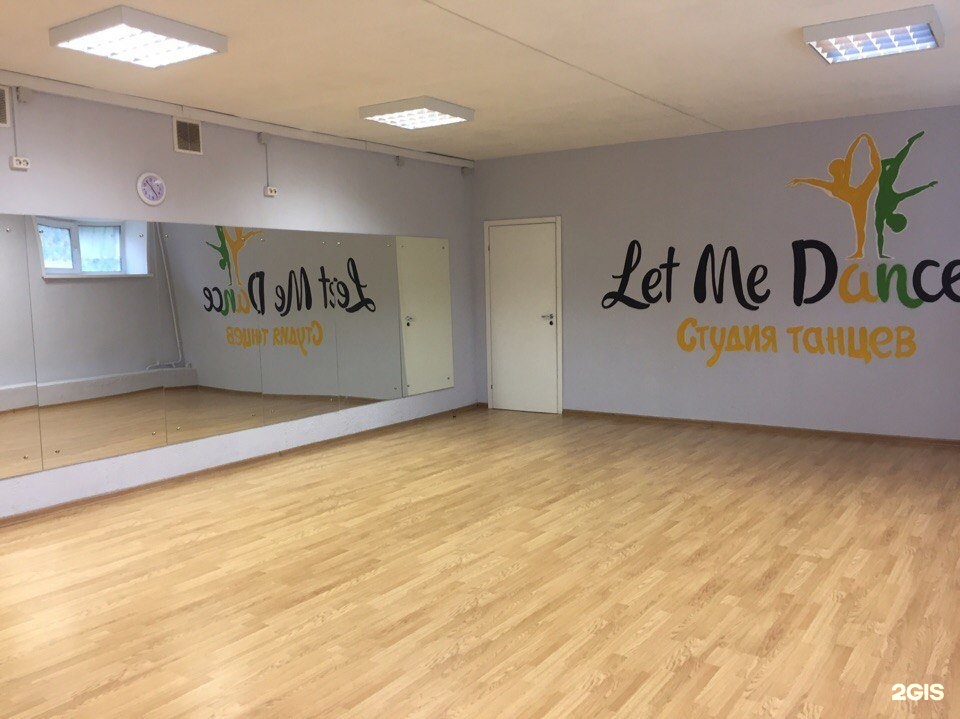
Experts recommend using a combination of both post types for the best social media results. You can develop your organic audience for free while devoting some marketing dollars to paid advertising for a more intentional strategy. Be sure to track the analytics for all of your posts to assess their effectiveness at converting leads into customers.
One final tip — ensure you exploit the strengths of each social media platform. For example, Instagram is all about high-quality, authentic photos, while Facebook prioritizes original (not reposted) videos and posts made within Facebook groups. Keep these factors in mind as you build a strong social media presence for your studio.
Customer Referrals
Word-of-mouth advertising through customer referrals is one of the strongest marketing channels at your disposal. This type of promotion is so powerful because people respect and put stock in the recommendations made by their friends and family.
Think about how much value you put in the opinions of your loved ones, whether it’s a restaurant recommendation or their review of a recent blockbuster movie.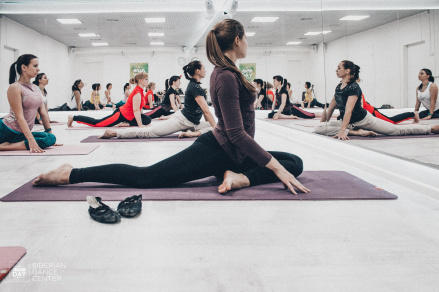 If they tell you the restaurant burned their steak, or the movie was the best one they’ve seen all year, it will probably have an impact on your decision to try that eatery or see the film.
If they tell you the restaurant burned their steak, or the movie was the best one they’ve seen all year, it will probably have an impact on your decision to try that eatery or see the film.
The same process happens when your current students recommend your studio to their cousins, friends, neighbors, or classmates. They tell their friends all about the fun events at your studio and how much they’ve learned in your classes, and inspire them to get involved. Through this method, you can exponentially grow your student community when each current student reaches out to multiple new prospects.
Plus, this marketing tactic is completely free. However, we do recommend offering an incentive for students to encourage them to recommend your studio. For instance, offer a tuition discount for customers who bring in new students. This will help get more students on board with referrals and ultimately, get more new students into your classes.
Most of us probably spend a good chunk of time in our email inbox each day.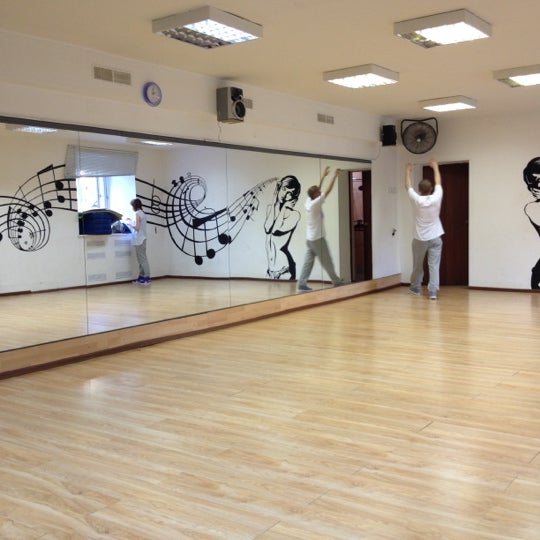 Whether we’re reading up on newsletter content or searching for promotions and deals at our favorite stores, email is a frequently-used communication platform to receive new information, especially from businesses and brands. Focus on building email lists for both prospective and current clients to entice new customers and retain the customers you already have. Here’s how to engage each segment:
Whether we’re reading up on newsletter content or searching for promotions and deals at our favorite stores, email is a frequently-used communication platform to receive new information, especially from businesses and brands. Focus on building email lists for both prospective and current clients to entice new customers and retain the customers you already have. Here’s how to engage each segment:
Acquisition email marketing
According to the marketing firm Accudata, acquisition email marketing is the process of “using email campaigns to grow your customer base.” Be sure to create an email segment for prospective clients that’s separate from your communications to your current students. There are also a few best practices to keep in mind for communicating with prospects via email. Be sure to:
- Send welcome emails right after people sign up. This makes interested consumers feel acknowledged and appreciated by your studio.
- Market your promotions and discounts.
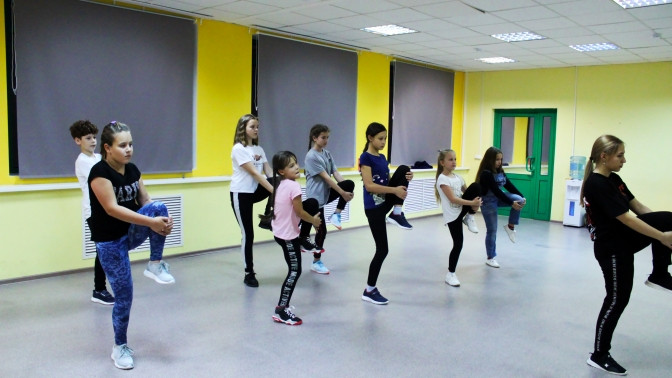 For example, if you’re offering a seasonal tuition discount or free classes to new students, be sure to convey these deals to your email subscribers.
For example, if you’re offering a seasonal tuition discount or free classes to new students, be sure to convey these deals to your email subscribers. - Provide the option to unsubscribe and respect when people do. It’s illegal under U.S. legislation to not include a link that lets recipients unsubscribe from your messages, so you must provide a clearly visible unsubscribe button in all of your email communications. And when people choose to unsubscribe, respect this choice and don’t email them again through any sneaky backchannels.
Be sure to strike the right balance between giving your prospects the information they need to get involved without annoying them by spamming their inbox with messages.
Loyalty email marketing
Email marketing is also important for engaging your audience of current students and parents. Accudata defines loyalty email marketing as the process of “retaining and re-engaging current customers.” To keep your current clients interested, you must:
- Send appreciation messages.
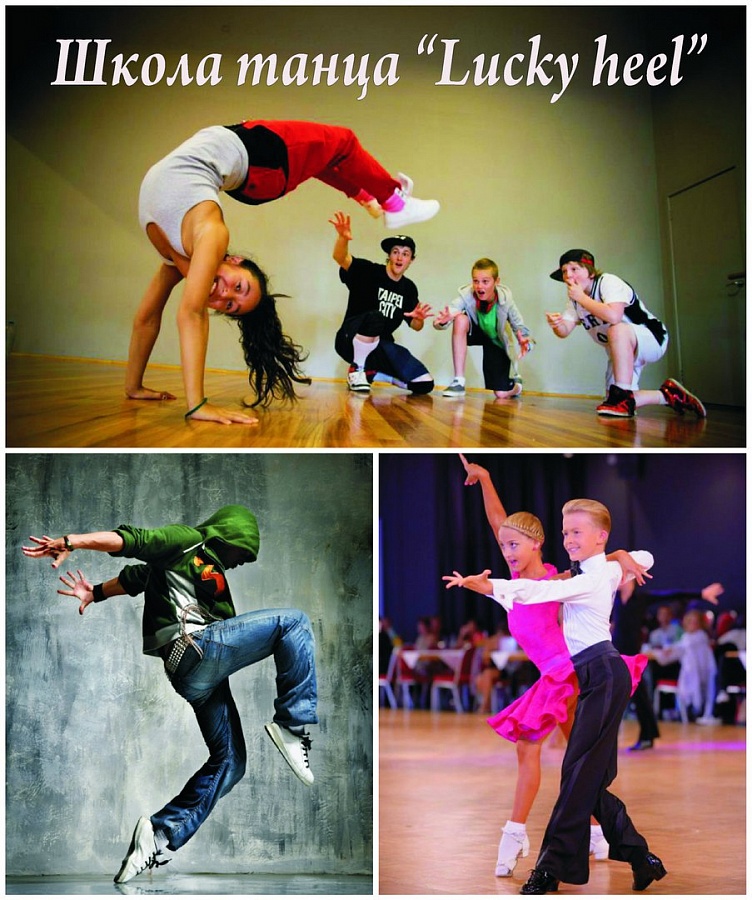 Whenever customers purchase items like your studio merchandise or tickets to upcoming events, be sure to send thank-you emails that convey your gratitude for their continued support.
Whenever customers purchase items like your studio merchandise or tickets to upcoming events, be sure to send thank-you emails that convey your gratitude for their continued support. - Give perks to loyal customers. Surprise your long-time students with free t-shirt giveaways, raffles, or discount codes.
- Solicit feedback. Your students want a chance for their voices to be heard, too. Send out surveys to gauge student opinions on different aspects of your studio such as class variety, teacher effectiveness, and overall satisfaction. You’ll give students an outlet to express themselves and gain valuable feedback to adjust your strategy moving forward.
By pursuing a combined strategy of reaching out to prospective and current students with tailored messages, you can optimize your email newsletter to be an effective engagement avenue for your studio. There are plenty of email campaign platforms you can use for free such as MailChimp and HubSpot, or you can team up with a dedicated email marketing provider to help gain access to curated email lists. Consider your email marketing goals to choose the right provider for your dance studio.
Consider your email marketing goals to choose the right provider for your dance studio.
Branded Merchandise
Who doesn’t love a soft, stylish t-shirt or fun branded mug from their favorite business? Let your dance community members become walking advertisements for your studio by offering branded merchandise with your logo and colors!
Give students free merch when they register for classes or as part of random giveaways or sell your swag at your dance studio store. When your students wear or use your merchandise while out and about, it exposes a wider audience to your studio brand and can pique potential customers’ interest. Striking designs or stylish typography help your merchandise stand out and attract attention.
Beyond t-shirts or mugs, offer items like branded face masks, duffel bags, water bottles, and warmup outfits. Your dance students can deck out from head to toe in your studio’s merchandise to market your business wherever they go. Plus, you can unify your studio’s brand by having everyone wear the same style of clothing.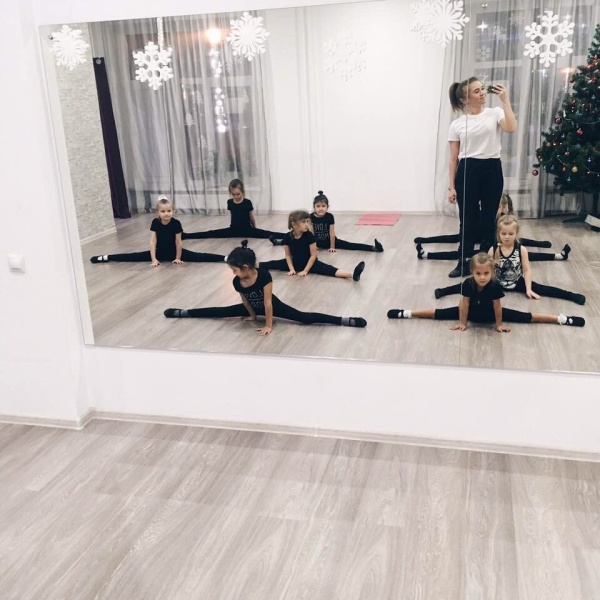
Direct Mail
A comprehensive marketing strategy doesn’t just include digital communication platforms. According to this resource, direct mail has one of the highest ROI ratios for any marketing platform, and it’s effective for connecting with older demographics.
By combining your efforts in the virtual realm with physical advertisements such as direct mail appeals, you can reach a wider audience of potential students and their parents and help your message stand out. The benefits of direct mail include:
- Connecting with customers on a personal level. Consumers appreciate when direct mail is personalized with their preferred name and when it speaks to them on a deeper level. For example, share a compelling story of one of your current students and how your studio has impacted them. Maybe they faced challenges in their journey but were able to persevere and win a major competition with the help of your studio’s instructors. That’s the kind of personal story that can move readers and capture the attention of prospective students.
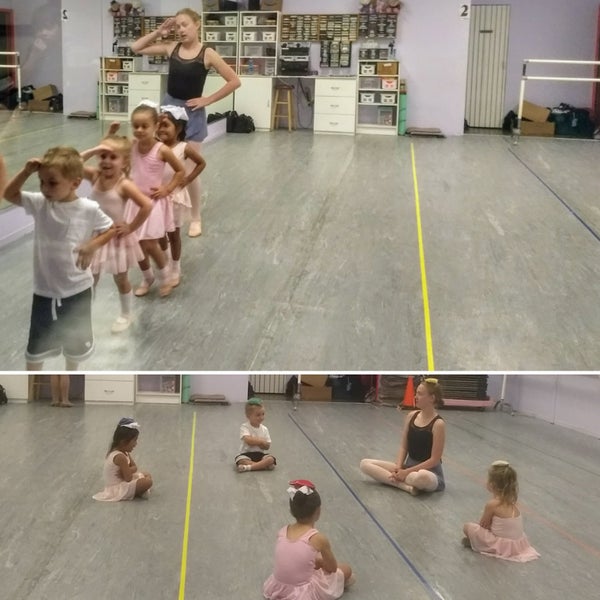
- Standing out above the clutter. Since people are spending so much time on their phones nowadays, they consume a significant amount of advertisements from countless businesses trying to sell them something. With direct mail, you can focus your audience’s attention on just your advertisement for a moment, improving the chances that they’ll remember you and contemplate your message.
Send out postcards or flyers in your local area to spread the word about your studio and encourage prospects to give it a try. Be sure to offer incentives like getting the first class free so potential students can see if your studio is a good fit before committing.
SEO
Search engine optimization (SEO) is a popular digital marketing tactic businesses can use to improve their website’s ranking on search engine results pages (SERPs). This is important for your dance studio because there are usually only 10 organic results listed on the first page of Google.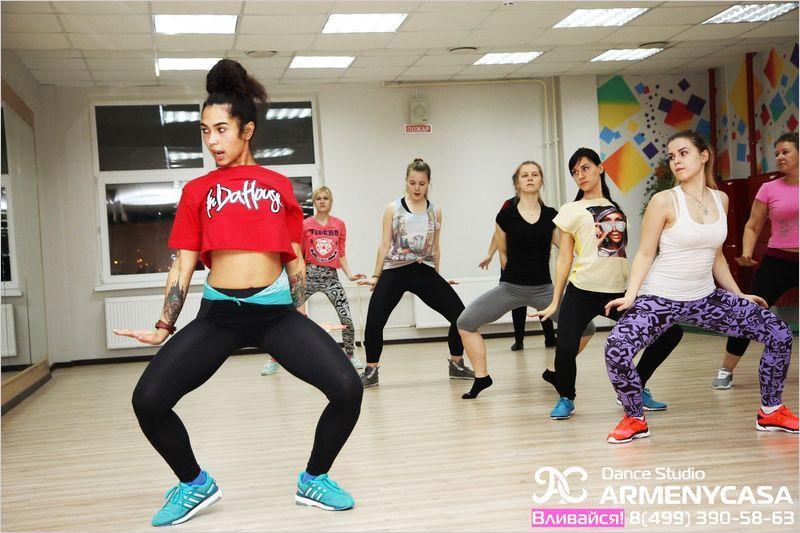 Since a mere 25% of users continue on to the second page of Google search results, you want to get your website content onto that first page when users search for keywords relevant to your business.
Since a mere 25% of users continue on to the second page of Google search results, you want to get your website content onto that first page when users search for keywords relevant to your business.
To understand the importance of keywords, put yourself in your prospective customers’ shoes and think about what they would type into the search bar when investigating options for local dance studios. If you were a parent of a rambunctious seven-year-old with a desire to join a dance class, you’d probably type phrases like “dance studios for kids” or “dance studios in [your city].”
For instance, when users located near Atlanta, Georgia, search the term “dance studios for kids” on Google, here’s what they see. At the top of the SERP, there are several paid search ads (we’ll dive into these more in the next section):
Below the paid ads, there’s a map that features several dance studios for kids in the area. These maps and listings are highly valuable for consumers because they include necessary information such as business addresses, phone numbers, hours of operation, and reviews.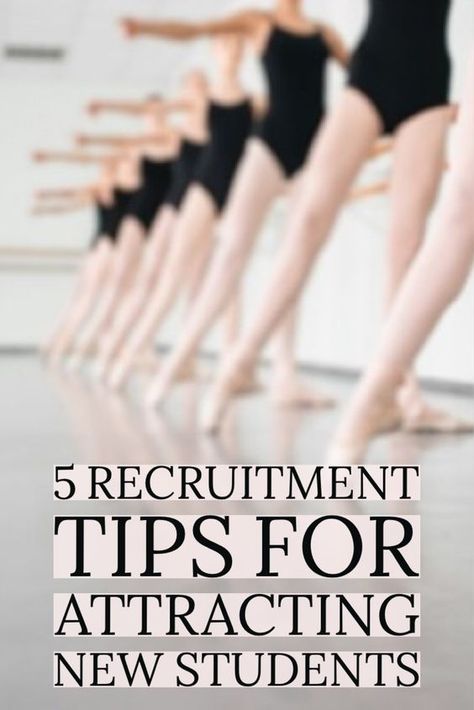 To add your business information so that your studio appears in these listings and on Google Maps, create a business profile on Google My Business.
To add your business information so that your studio appears in these listings and on Google Maps, create a business profile on Google My Business.
Lastly, the rest of this SERP is filled with organic search results like these:
As you can see, once users scroll past the paid ads and business listings, there’s limited remaining space on the SERP for the organic results. Therefore, it’s important to create a strategy that ensures your website is among the top results. There a few steps to take to optimize your Google rankings:
- First, do some research to compile a list of the most relevant keywords in your area for your business. You can use a free keyword research tool like Google’s Keyword Planner or Moz’s Keyword Explorer to identify top phrases.
- Then, once you’ve gathered a few important keywords, be sure to include them within your website content so that your pages pop up on the first results page when customers type in relevant search queries. Include the keywords in the headings and subheadings of blog posts or internal website pages.
 This signifies to Google that the content is relevant and valuable for users and helps your pages rank higher on the SERPs.
This signifies to Google that the content is relevant and valuable for users and helps your pages rank higher on the SERPs.
This is just a brief overview of SEO, but there are plenty of resources available for SEO beginners to get a deeper understanding of the process if you want to really dive into this marketing option.
Pay-Per-Click Advertising
Pay-per-click advertising (PPC) is an advertising model where marketers pay publishing partners (typically search engines) every time their ad is clicked. You can choose to bid on keywords that are relevant to your target area. If your bid is accepted, your website link will appear at the top of the SERP for your chosen keyword.
Here’s an example of the PPC ads that appear when a user searches the keyword “dance studio lessons.” If your studio was to bid on this keyword and win, your website link would be one of these text-based ads:
Other types of PPC ads include Google shopping ads that appear when users search for certain products. Check out these ads for the keyword “dance shoes”:
Check out these ads for the keyword “dance shoes”:
By pursuing a PPC strategy, you guarantee your website will pop up when users search your target keywords, even if your organic website links aren’t currently ranked on the first results page.
This effort will require some of your marketing funds, but if your dance studio is a nonprofit organization, you could actually receive this advertising perk for free. Registered 501(c)(3) organizations are eligible for Google grants for free search ads.
Either way, these ads can be a great way to get your studio’s website on your target audience’s radar, even if your organic web presence isn’t quite where you want it to be.
Flyers
Another non-digital marketing avenue you can use to reach new students is a good old-fashioned flyer. Flyers are a cheap marketing idea because if you’ve got a computer, printer, and some ink, you already have what you need to create your own flyers. Alternatively, you can also print your flyers for a fee at a print shop or office supply store and use their higher-quality materials.
Ensure your studio flyer has all the basic info for your studio. Here’s a template that offers an example of what your flyers might look like:
Your dance studio marketing flyers should include your studio name and logo, your tagline (if you have one), a brief overview of classes you offer and your upcoming class schedule, your address, and contact information like your email, phone number, and social media handles.
Put up your flyers on public bulletin boards, but make sure you have permission first. Here are a few popular places that usually permit businesses to hang flyers:
- Public parks
- Grocery stores
- Coffee shops
- Gyms
- Restaurants
- Libraries
- Bus stops
- Community centers
- Street posts
Hanging flyers in these locations exposes your business logo to the general public, but you can get strategic with your flyers, too. Hand them out to current students and encourage them to ask their teachers if they can pass flyers out to classmates.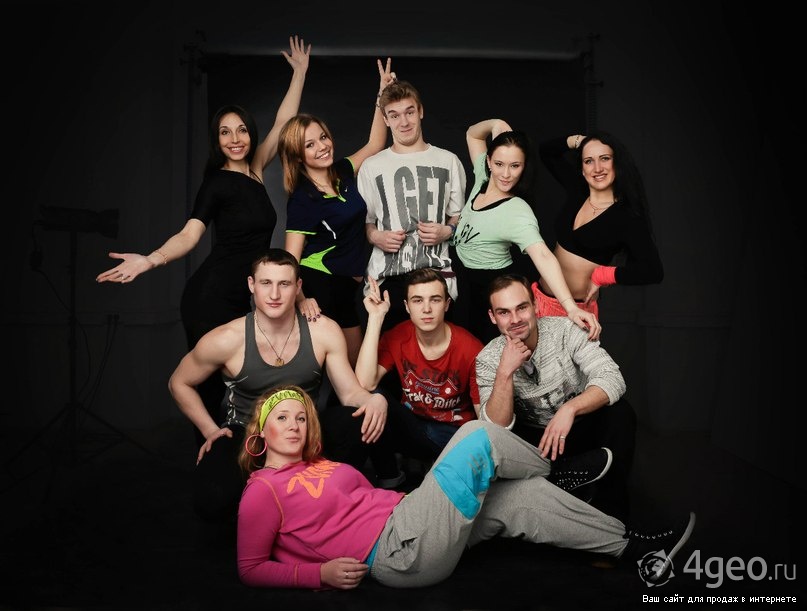 This will get your studio information directly in front of members of your target audience.
This will get your studio information directly in front of members of your target audience.
Local Sponsorships
Look into options for sponsoring civic clubs, sports teams, nonprofits, charity events, and other activities in your area to get the word out about your studio.
Sponsorships can be highly productive marketing opportunities because they accomplish several goals at once. They help market your studio, allow you to network with other business owners to foster ongoing relationships, and position your dance studio as a supporter of local community activities and events. Let’s explore each of these benefits:
- Market your studio: By sponsoring local groups such as youth sports teams, or events like charity 5Ks, you can get your business logo on banners, t-shirts, and other marketing materials related to the events and activities. You’ll introduce your dance studio to a wider audience of community members who may not be familiar with what you have to offer.

- Foster relationships: Plenty of events feature booths for each sponsor to offer more information about their business. Take advantage of these opportunities to not only connect with prospective new students but also network with other local business owners. You can share advice and even put up each other’s flyers at your respective businesses for mutual benefits.
- Position your studio in the community: Through involvement in events, you position your dance studio as a proponent of local groups and charities. According to Double the Donation’s corporate social responsibility guide, consumers are more willing to do business with establishments that engage in charitable efforts to improve society.
Here’s an example of what your booth might look like at a local event like a charity 5K, annual music festival, or sports tournament:
As you can see, this is a great way to prominently display your logo and attract the interest of event attendees.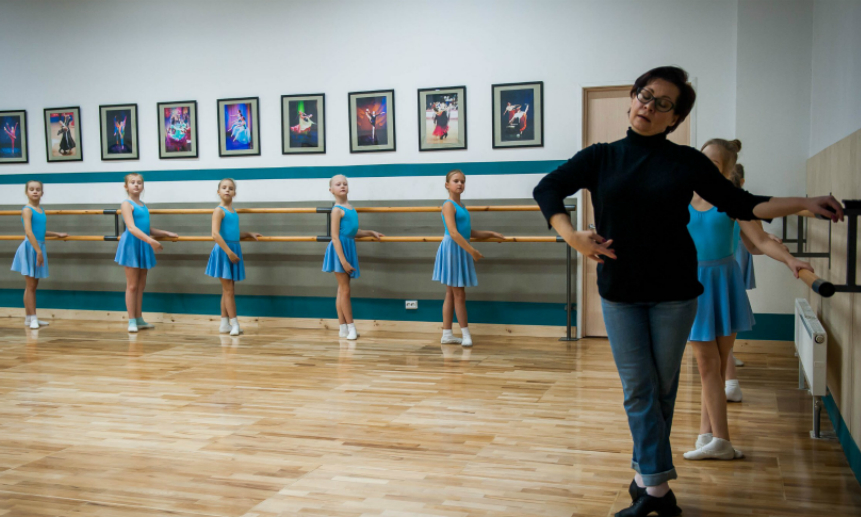
Ultimately, through sponsorships, your dance studio will not only be able to do some good in the local community, but also share your message with the wider community and boost your PR image.
Text
In the approximately seven hours teens spend on their phones each day, they aren’t using 100% of that time for social media. They’re also staying in touch with friends and family through texting.
Reach potential students where they already are by carrying out text message marketing efforts. You can use your texts to share information about:
- Seasonal tuition discounts or promotions
- Upcoming special events such as recitals or studio-wide parties
- New merchandise for sale at your studio store
To create an effective text marketing strategy, you need a way to send out mass messages to everyone at once to save yourself time. With a platform like robo-texting from DanceStudio-Pro, you can send out messages to segmented groups with ease.
Create communication segments to speak to just students or just their parents. Be sure to tailor your message to appeal to each group (and save the texting lingo for the younger crowd).
Telemarketing
Similarly, conducting telemarketing efforts to advertise your dance studio also takes advantage of your audience’s frequent phone usage. You can gather phone numbers for your text and telemarketing efforts through:
- Prospect research
- Collecting information on sign-up sheets while marketing your studio at community events
- Providing a link to sign up for text/call alerts on all marketing platforms
You should make an extra effort to reach out by phone to prospective students who expressed significant interest in taking a class. A personal phone call can make all the difference in influencing them to make the leap and actually sign up. They can get their questions answered on the spot and figure out exactly what they need to register for classes.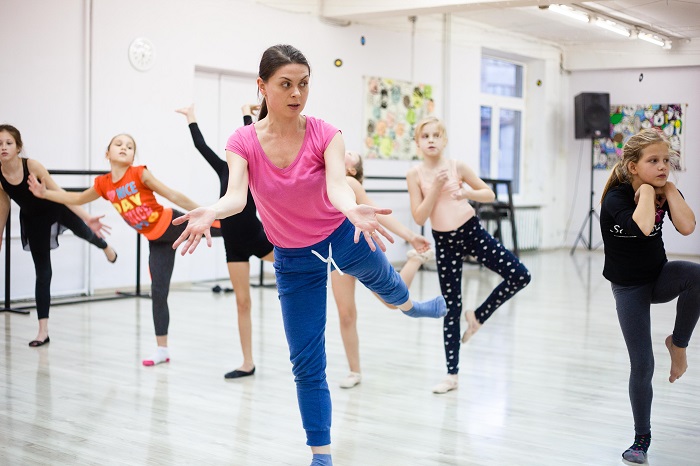
Dance Studio App
Take your digital marketing efforts to the next level by creating your very own studio app! With a program like MyApp-Pro from DanceStudio-Pro, you can create a personalized app for your dance studio using your logo, colors, and other branding specifics. Students and parents download your mobile app right from the Apple or Google Play app stores. Check out this example of what your custom dance studio app could look like:
Use your custom-built dance studio app to:
- Send event reminders and updates through push notifications.
- Send reminders to register for classes with your online student registration link.
- Share videos and photos of your current dancers and their progress to engage students and generate excitement for your classes
Not all dance studio owners can say they have their very own studio app, so this can be an opportunity to set your business apart from competitors and offer something unique to your current and prospective students.
Conclusion
Hopefully, a few ideas on this list jumped out at you or inspired you to start thinking of what it would look like to implement the idea into your own dance studio marketing plan.
Again, we recommend using a combination of these approaches in tandem and balancing your digital and non-digital marketing strategies. For example, you may be interested in pursuing social media marketing, direct mail, and telemarketing. Or, you might prefer focusing on SEO strategy, sponsoring a few local events, and creating a comprehensive dance studio app. Combining digital with in-person or tangible marketing tactics will yield the greatest results by helping you cast the widest net to attract new customers.
Be sure to also combine paid and free marketing opportunities. Don’t pass up any opportunities for free advertising, but invest in a few key paid sources to be more intentional with your strategy and market your services directly to your target audience.
Once you’ve sufficiently spread the word about your studio and earned some new customers along the way, make sure you continue running the best dance studio possible and offering valuable experiences to your students. One of the best ways to ensure you’re maintaining a high-quality studio is by equipping your team with proper dance studio management software. When you and your team of dance instructors operate efficiently, you can continue to grow your dance studio and boost revenue in the process.
One of the best ways to ensure you’re maintaining a high-quality studio is by equipping your team with proper dance studio management software. When you and your team of dance instructors operate efficiently, you can continue to grow your dance studio and boost revenue in the process.
For information on how to optimize all aspects of your dance studio business strategy beyond just your marketing plan, check out these additional resources:
- Dance Studio Business Plan. Your dance studio business plan acts as a guiding force for all future business decisions and can be presented to potential business investors to give your studio a funding boost. Use this guide to create a detailed, functional business plan for your dance studio.
- Tips for Dance Studio Owners: 9 Best Practices for Success. As a dance studio business owner, you know that marketing isn’t the only task on your plate. Check out this resource for tips to improve and streamline all aspects of your studio.
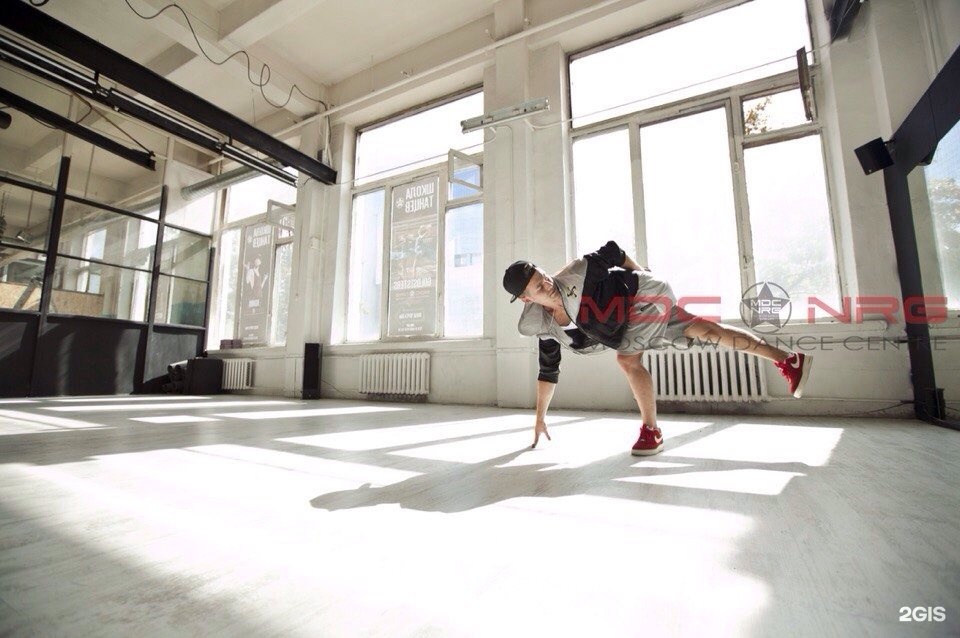
- Dance Studio Management: The Ultimate Guide for 2021. Running a dance studio in the modern age means fully embracing powerful dance studio management software. This post provides tips on using your dance studio software to manage your business more effectively.
Laura Cole, CEO of DanceStudio-Pro
For more than 15 years, Laura Cole has focused on strategic planning and project management for SaaS organizations. Laura became the CEO of DanceStudio-Pro in 2020. Laura is a wife, mom, yogi and volunteer.
10 Easy And Effective Dance Studio Marketing Ideas To Find Your Students
As a dance studio owner, you’re creative and passionate. These skills transfer readily to getting the word out about your studio with marketing. Even better, today there are many fun and authentic ways to do this while staying within a minimal budget. They range from solutions for tech-savvy studios to those who want to focus on community-level engagement. Here are ten dance studio marketing ideas that are easy, effective, and affordable. All they need is your own creative touch!
Here are ten dance studio marketing ideas that are easy, effective, and affordable. All they need is your own creative touch!
Let potential students see what your studio is all about, free of charge. An open house allows people to meet your teachers, see the space, and get answers to all of their important questions.
Hold several different types of shortened dance classes throughout the event so people can see each one. Let them join in on the fun and try a few moves! Consider offering special perks or discounts for students who sign up for classes before they leave the event.
You can advertise ahead of your open house by posting in the newspaper, adding the event on social media, and sending out postcards to neighborhoods around your studio. Ask other related businesses to spread the word for you as well.
2. Find Bulletin BoardsOnce you’re looking for them, you’ll see there are bulletin boards everywhere.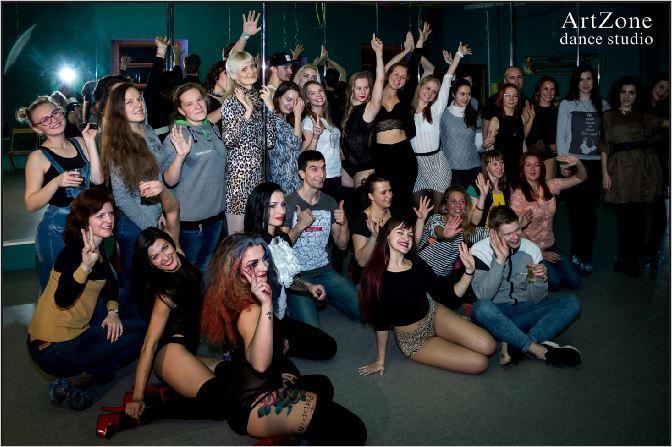 Check your local coffee shops, lunch spots, schools, gyms, and daycares for a free communal place to hang your flyer to find your students.
Check your local coffee shops, lunch spots, schools, gyms, and daycares for a free communal place to hang your flyer to find your students.
This can be a generic advertisement for your dance studio or perhaps an advertisement for an upcoming event. You never know who may be looking!
3. Use Social MediaSocial media can be an incredible marketing tool. It doesn’t cost anything to create a profile and begin sharing content. Use tools like Facebook Live and Instagram Stories to give your followers a “sneak peek” into your classes. You can also create videos for each of your teachers. Let them introduce themselves and discuss what a typical day in their class looks like.
Willing to spend a little cash for a boost? Ads on Instagram and Facebook can go a long way towards reaching new students in your area, but you don’t have to spend a lot. As little as $25 per week could make a difference in getting your page in front of the right audience.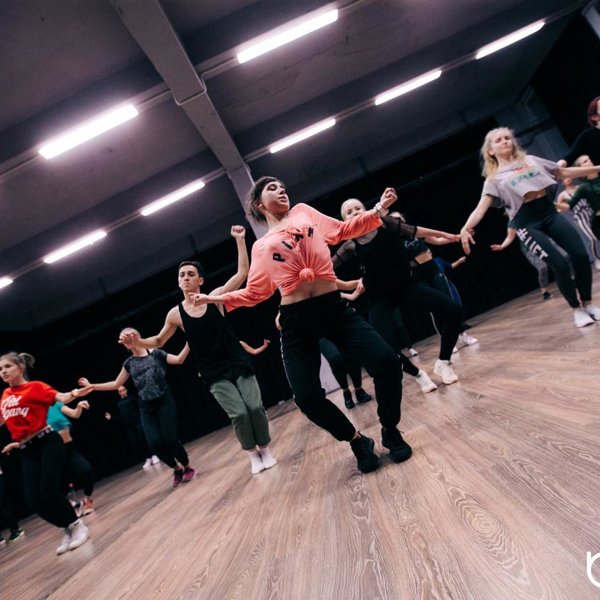
Hosting unique events will help your studio get the attention it deserves.
Consider a ballet show under the stars during the warm summer months, holiday-themed shows, or routines to contemporary favorites. Shows like these will attract people from all over your community, which can boost visibility and bring in new students.
5. Target Specific AudiencesThere are several specific groups of children and adults who are looking for classes that are tailored to them. For example, consider hosting classes for individuals with special needs, those with limited mobility or chronic health conditions, pregnant women, and babies or toddlers (think mommy and me classes).
Open your studio up to a whole new group of people by putting on classes like these, even if it’s just once a month. This offers an outlet that is so rewarding for the individuals who take your classes, their families, and the community.
Build your network within the community by partnering with other local businesses. Dance supply stores and costume shops are often a natural fit, but don’t be afraid to think outside the box. Wellness spas, healthy local grocery stores, music stores, or your local symphony may all be a good fit.
Help each other by placing postcards or flyers at your checkout areas or offering “free class” specials for customers.
You can also find businesses that are interested in teaming up for special events. Outdoor shopping centers or large breweries for example are great for this type of marketing. Offer to hold a free dance class in a large communal area of the center. You’ll benefit from advertisements for the event and they capitalize on people spending time (and potentially money) there.
7. Volunteer In Your CommunityIncreasing visibility in your community is one of the best ways to get your name out there. Is there a family-friendly event coming up at your local park? Perhaps the farmer’s market needs volunteers to help set up?
Is there a family-friendly event coming up at your local park? Perhaps the farmer’s market needs volunteers to help set up?
Get out there and volunteer wherever you can. Wear clothing with your dance studio logo and bring plenty of business cards with you! People love to see business owners who care about being involved around town.
8. Build A Solid Email ListBe sure to create a targeted email list comprised of current, past, and potential students.
Try not to overdo it with your messages (no one likes repetitive spam from a business). Weekly or monthly emails generally work best.
Keep your contacts in the loop about exciting changes to your lineup of classes or upcoming events. Consider including special deals or discounts from time to time. This will keep people interested in opening the emails you send.
9. Ask For Online ReviewsIf you’re running a successful studio, you clearly have some happy dancers! Don’t be afraid to ask them to review your business online.
Yelp and Google are two of the most popular places people go to research local businesses and see what other people are saying. This will help you continue to grow and improve your studio as people hear how great your studio is!
10. Automate Your Tasks With Dance Studio SoftwareDetermining how much, whether, and when to invest in marketing campaigns can be challenging. Fortunately, the right dance studio software can automate marketing tasks for you, so you can focus on running your studio.
Let The Studio Director do the heavy lifting when it comes to your marketing efforts. Efficiently schedule emails crafted for new students, special promotions, and even birthday greetings. You’ll also have access to new dance studio marketing ideas like email templates. See which ones are working each month with communication reports, such as send and open data from your campaigns.
Beyond dance studio marketing ideas, The Studio Director can help you keep track of enrollment, billing, and much more. Contact us to learn more or start your free trial today!
Contact us to learn more or start your free trial today!
Discover How Our Software
Can Help Your Studio
Get Started Now
Promotion of a dance school: how to advertise and promote services of a dance studio
Promotion of a dance school requires a non-standard approach in marketing due to the specifics of the business area. Dancing is fun, energy and drive, so advertising for a dance studio should evoke the same emotions. The times when new customers could be attracted by distributing leaflets near the subway are long gone. The modern audience wants everything at once. It is necessary to introduce her not only to the services, but also to the people who provide them. In this article, we will tell you what to do before starting to promote a dance studio and how to attract new customers using different types of advertising.
What to do before you start promoting a dance studio
1.
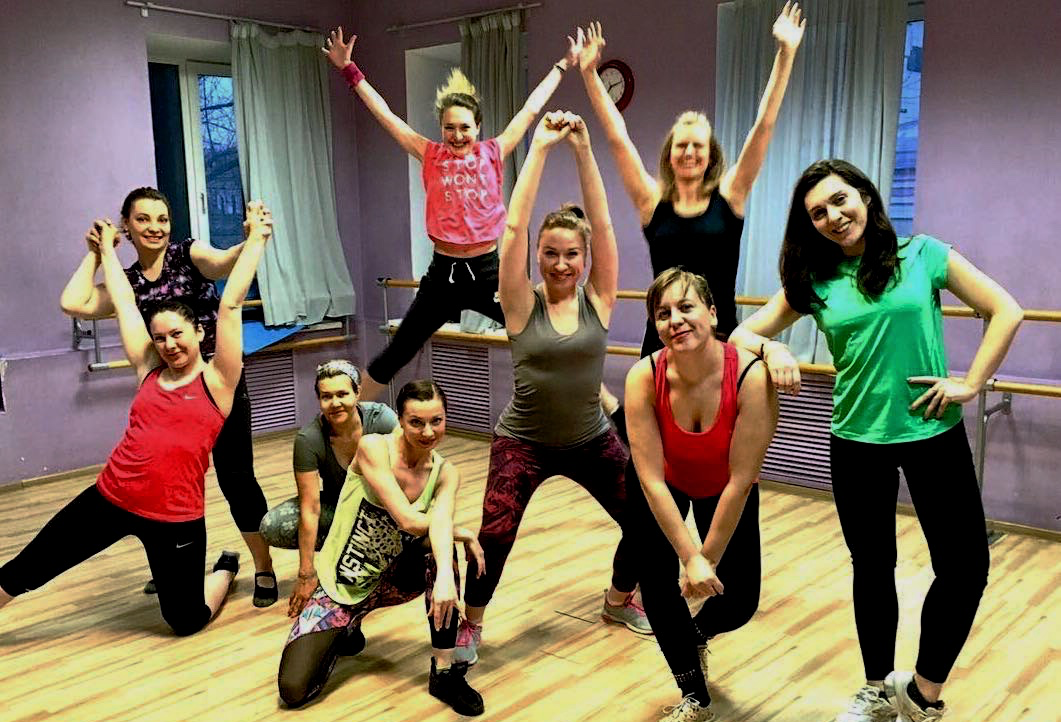 How to determine your target audience
How to determine your target audience As in any other area of marketing, advertising and promotion of a dance school is based on the study of your target audience. At the same time, you need to understand that dance studios have direct and indirect competitors. Fitness clubs, wellness centers, martial arts schools also offer sports and development services. Therefore, the task of your marketing campaign is to convince people that dancing is the most suitable way of leisure.
Vogue dance with Verona Models
You can analyze the target audience using:
- • questionnaires or surveys;
- • interview;
- • focus groups;
- • thematic blogs and forums;
- • social networks.
The last method is good because with a minimum of money and time spent, you will find out the nature, habits and needs of your target audience. Also in social networks, you can see how and for what audience competitors are promoting their services.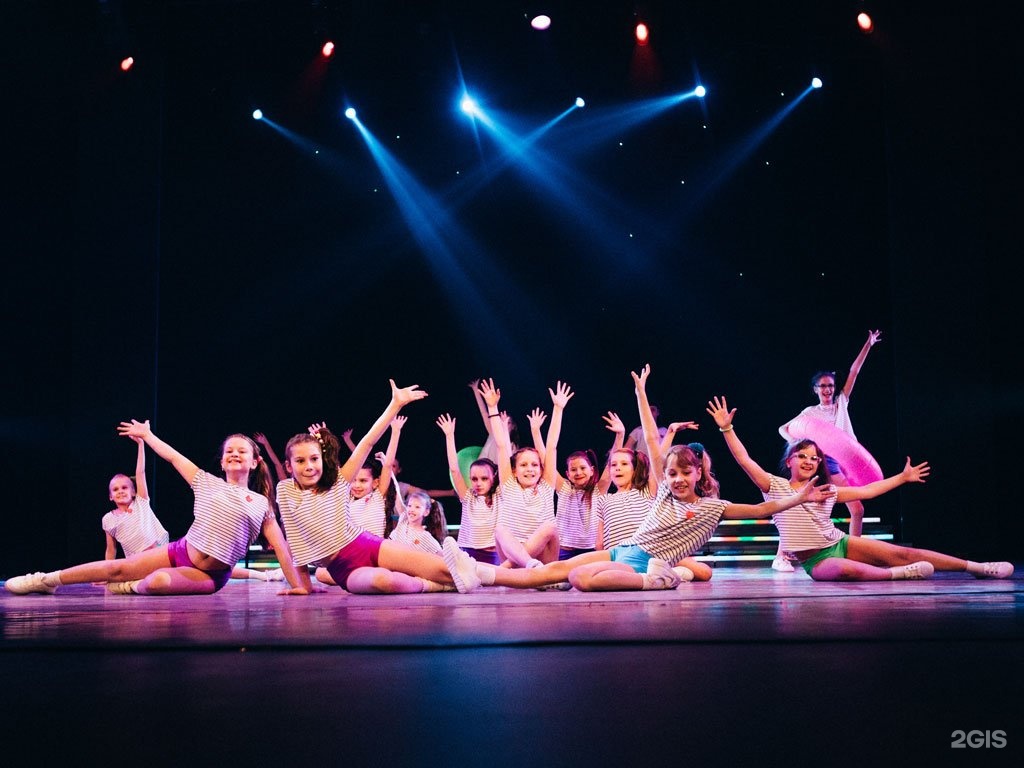
2. How to create a client portrait
After analyzing the target audience, you need to break it into segments and create a portrait or avatar for each. Here is a list of parameters to consider:
- • gender;
- • age;
- • area of residence;
- • income level;
- • marital status;
- • interests;
- • problems and pains.
By “running” clients through this list, you will get their psychological profile. It will help you work out the benefits consumers will receive from your service and identify triggers to influence them.
3. How to create a sales funnel
Think about the customer's journey from the moment he sees the ad to the moment he buys the service. If you're promoting with free lessons, your sales funnel might look like this:
- • interest in dancing;
- • search for a suitable school;
- • contact with advertising;
- • sign up for a free lesson;
- • free lesson;
- • receiving an offer.

4. How to form an offer
The offer is formed based on the problems of the audience with the help of its main triggers. This is your promotional offer. “Learn to dance hip-hop in 3 months”, “Sign up for a free trial lesson”, “Become a member of a friendly community of dancers” - these are examples of offers for a dance studio.
5. How to create a landing page structure
The purpose of a landing page or landing page is to motivate the client and involve them in the sales funnel. It is important to remember that several advertising banners can be located on such a page at once. The structure of the landing page is based on the pains of customers. For example:
Banner 1: main offer.
Banner 2: Headmaster's video message.
Banner 3: photos of students and teachers.
Banner 4: school facts or regalia.
Banner 5: a unique offer, such as discounted private lessons.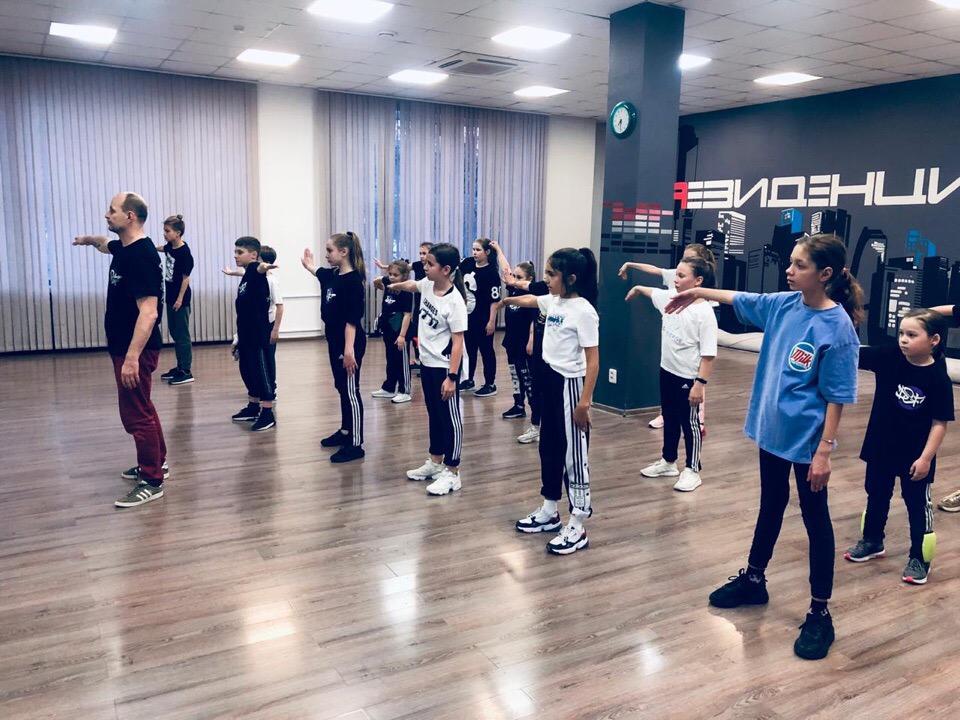
Banner 6: subscription offer.
Banner 7: School FAQ and contacts.
With this approach, advertising and promotion of the dance school is much more likely to resonate with potential customers. After all, you interact immediately with all segments of your target audience and work out objections.
How to promote a dance studio through contextual advertising
The advantage of contextual advertising is that it starts working immediately after launch. In a short time, you can collect a large number of applications and reimburse the costs of promotion. But it will take time to figure out the settings of the advertising account.
There are 3 contextual advertising mechanisms:
- Search algorithms. By analyzing the most popular queries for keywords, the system brings you to those who right now are driving into Google or Yandex “dance school record online”. When interacting with such a client, it is important to convince him to conclude a deal as soon as possible, otherwise he will go to competitors.
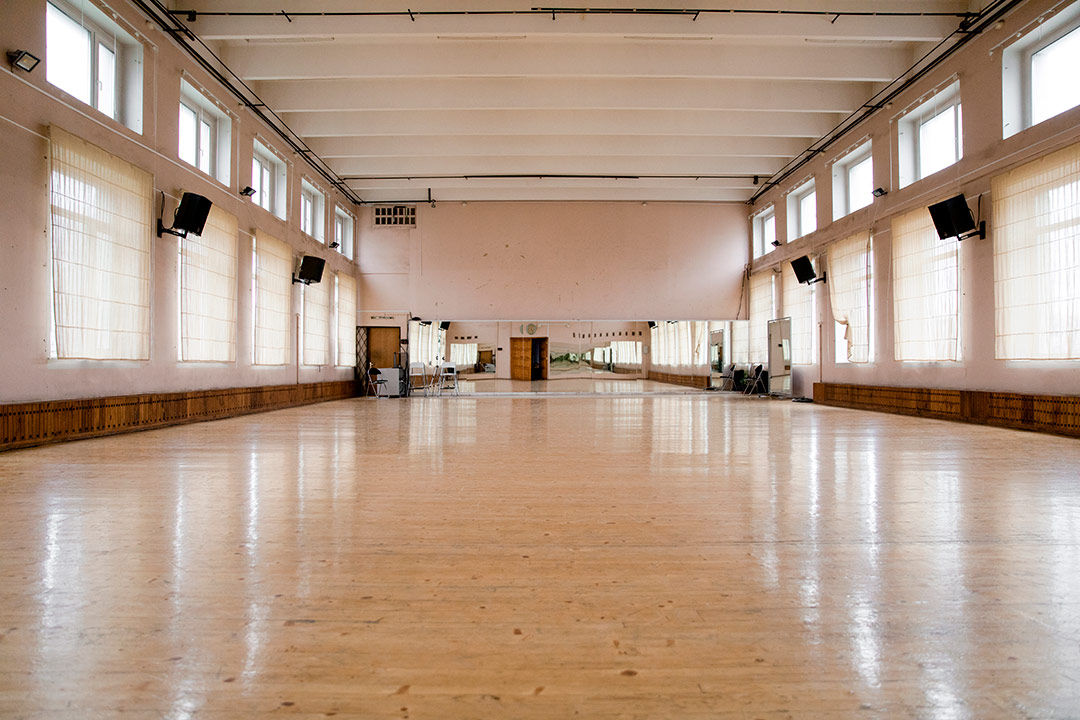
- GMS (display network) Google and YAN (Yandex advertising network). They show ads on affiliate sites for people who are interested in dancing. This method gives a good conversion for a relatively low price, however, the audience received from such an advertisement will be cold.
- Retargeting or remarketing. It allows you to make a special offer for those who came to your site, but for some reason did not leave a request.
How to promote through targeted advertising
Targeted advertising is the most suitable option for small dance schools. An advertising account on Facebook and Instagram is much simpler than on Google and Yandex, and the cost of an application is lower. But contextual advertising has a higher conversion rate, as the target leads to a cold audience that your sales team needs to “finish”.
To make targeted advertising more successful, collect enough leads, upload the data to your Facebook ad account, and create a Lookalike Audience.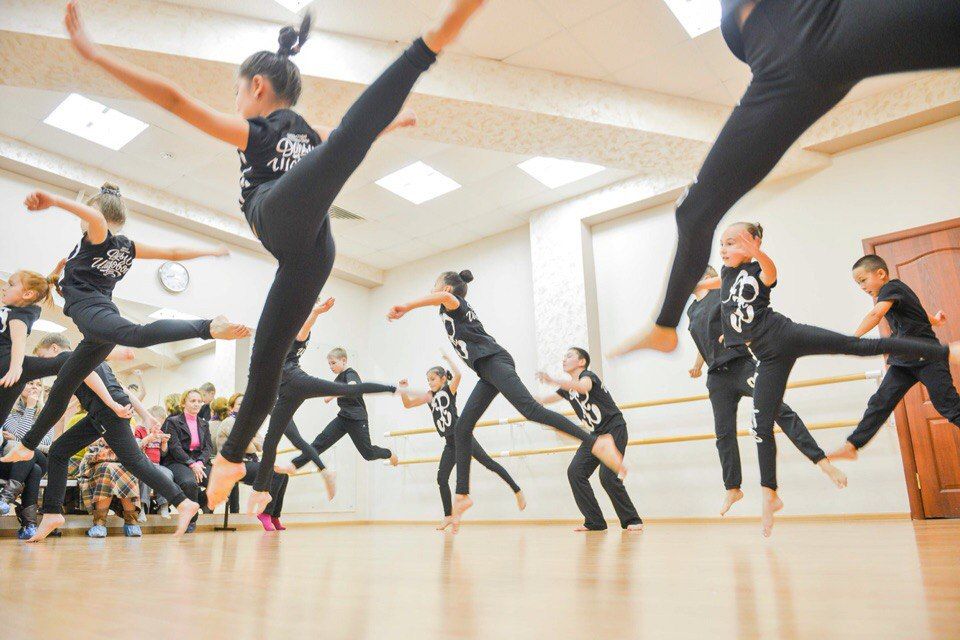 She may be the most responsive.
She may be the most responsive.
How to promote a dance school with SEO
Before you start SEO promotion, carefully analyze your competitors. This will help you optimize your strategy and understand what services are in demand. For advertising to be effective, combine related keywords into groups (clusters) and prioritize queries. Then search algorithms will display the site in the TOP results due to natural traffic. You also need to make sure that there are no technical errors on your site.
Advertising with bloggers to promote the dance school
If you want to agree on a barter, use the following algorithm:
- • through blogger search services, find those who live in your city and who are interested in the services of a dance studio;
- • offer a blogger a free lesson in exchange for advertising;
- • agree on cooperation. Be sure to specify how many advertising posts the blogger will publish in his account.
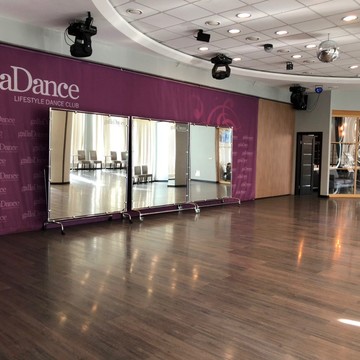
If the blogger does not agree to barter, consider how necessary this type of promotion is.
Other Ways to Attract Customers
To get maximum exposure, try additional promotion methods:
1. Free Lessons
Dancing is one of the most spectacular art forms. If you organize a public performance of teachers and students of the school, the audience will see the result live and receive additional motivation.
2. Promotions and discounts
To interest potential customers, arrange an open day. Workshops, consultations and discounts on subscriptions - showcase all the features of the school to interest visitors.
Modern dance school in Kyiv
3. Participation in competitions
First place in dance competitions is a sure way to increase customer confidence. To increase the conversion, try adding the phrase to the offer: “Do you want to learn dancing with the winners of the international competition?”.
4.
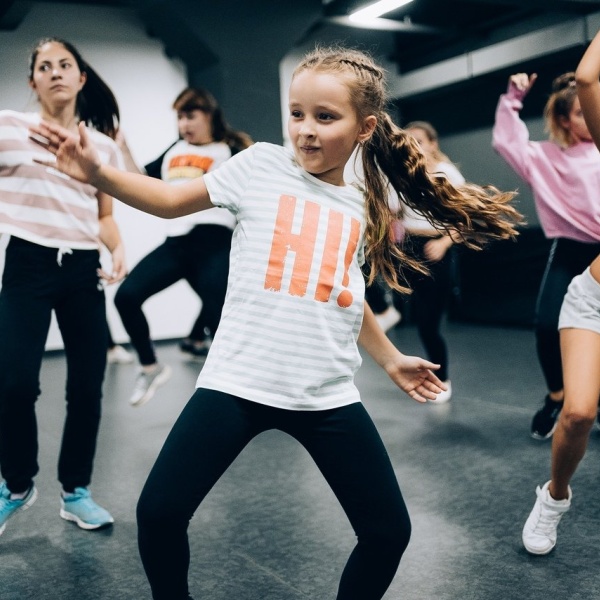 Partner programs with neighbors
Partner programs with neighbors The main advantage of such programs is a double budget for promotion, which allows you to organize a large-scale advertising campaign. Anyone can be a partner: a fitness club, a yoga studio or a children's music school. It is important to correctly present information and find common ground with the audience.
5. Offline advertising
Whether this method is needed depends only on the habits of your target audience. If, during its analysis, you found that most potential customers are subscribed to the account of a trendy restaurant, try to negotiate with the administration of the institution to promote your services. It can be both advertising on flyers and street banners.
Conclusion
For a successful advertising campaign that pays off the investment, it is not enough to use one or two promotion methods. Complex marketing is needed with constant analysis and adjustment of the strategy. By combining various tools and platforms, you will be able to provide the school with a stable flow of students, and business with income and profit.
Optimize the business processes of your dance school together with 1C: Fitness Club to increase the effectiveness of your marketing! Leave a request and our managers will contact you for free consultation.
GET ADVICE
When connecting for a year cloud tariff
30% discount
Join the community on VK
Follow us on Yandex.Zen
profitability, work with teachers, promotion, difficulties and mistakes
Irina Malchukova
opened a dance studio twice
Author profile
Eight years ago I opened a dance studio in a small metallurgical town where there was nothing like it at that time.
During its existence, the studio went through several relocations, twice seriously went into the red, but in the end it remained a successful business, and then I sold it. I’ll tell you how everything was, what worked for me and what didn’t work out.
Why I decided to open a dance studio
The story began in a standard way: since childhood, I dreamed of dancing and for a long time persuaded my parents to take me to a choreographic studio.
There were no holidays, vacations or birthdays in the studio. It was possible to miss a training session only in two cases, as the coaches joked: he fell ill or died. The rest of the reasons were not considered valid, and it was possible to fly out forever.
Later, I appreciated the strict discipline and exactingness of the teachers. Thanks to them, I can easily control myself, concentrate on any, even unpleasant, business, and bring everything to the end.
This partly helped in business: I could work 10-12 hours a day without days off and holidays.
After graduating from school, I thought that dancing is a hopeless field, so I need to get a different education and build a career. I studied to be an economist and during my studies I managed to work in a trading company, a women's correctional colony and a large network company.
But I was bored doing monotonous activities and being subordinate to someone, I wanted to implement my ideas. In 2009, I decided to take a part-time job as a dance coach, and since then a completely different life has begun. I started working in the then popular areas: strip plastic, stretching, go-go, I also taught regular dances to children and was a group program coach in fitness rooms.
In 2009, I decided to take a part-time job as a dance coach, and since then a completely different life has begun. I started working in the then popular areas: strip plastic, stretching, go-go, I also taught regular dances to children and was a group program coach in fitness rooms.
I enjoyed teaching people and putting numbers, inspiring others to accomplish things, raising students, and working with them to achieve results. It's like a coach's job: he gives his whole soul and nurtures champions.
Almost as soon as I started working as a trainer, I wanted to open my own studio. I didn't like the set boundaries and the backward approach to business. In the dance schools where I worked, there were outdated areas that were out of fashion for a long time, such as aerobics. Classes were held without requirements for students and without results: we did not put numbers and did not participate in contests or competitions. There were no opportunities for growth for teachers or students.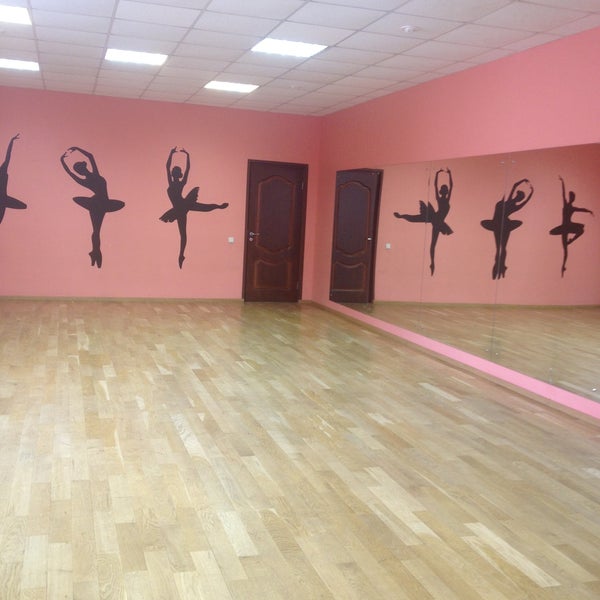
/twerk/
How to start dancing twerk, how much does it cost and why shake your booty at all
The business itself was not service oriented. Schools did not develop, did not innovate - they simply worked for decades according to the old scheme. Several times I came with fresh ideas, for example, to shoot a video clip, but all this was perceived by the management with hostility.
In 2012, I graduated from the institute and received a diploma in economics. I had a choice: to leave for another city, because there were no prospects in mine, or to go work in the dance field abroad, or stay here, but do my own project.
I dreamed of creating a project from scratch on my own: thinking about how to plan and conduct classes, presenting the design of the studio, tracking down the mistakes of others. All these thoughts were constantly spinning in my head, day after day I lived only with this idea, remembering what not to do or what could be improved.
After graduating from the institute, I myself learned about a new direction - half-dance, this is dancing with tricks on a pole. It seemed to me interesting and promising, there was nothing like it in our city. I decided that the idea would shoot and attract people due to its novelty. Three years after I started working as a trainer, I launched my own studio.
What is half-dance
Half-dance is close to strip plastic, but unlike it, the purpose of the dance is not to seduce, but to show acrobatic skills. The movements in strip dance are soft and smooth. And half-dance is the same gymnastics, only not on a beam or rings, but on a pylon. On it, dancers perform circus and power elements.
In my city, metallurgists were not even heard of such a direction, but in Russia and around the world in the 2010s, half-dance just became a trend. At that time, I already had a large client base from dance schools and fitness centers where I had worked before, many students asked when I would open my own gym.
| Pole dance combines elements of choreography, gymnastics, acrobatics | There is also a separate sports direction in the world - pylon sport, which belongs to air power athletics |
Before I opened my studio, I studied pole dance twice in Yekaterinburg - it was the school closest to me where this direction was taught. And there lived a friend with whom I could stay.
The first time I went was in January 2012, and then back in May, before the opening of my gym. I studied for a week every day for many hours, attended master classes. For the first time, the director of the studio gave me a discount on acquaintance, and the training itself cost only about 10,000 R. The second time I spent about 17,000 R: the cost of the training itself increased, and there were more additional expenses for food and travel.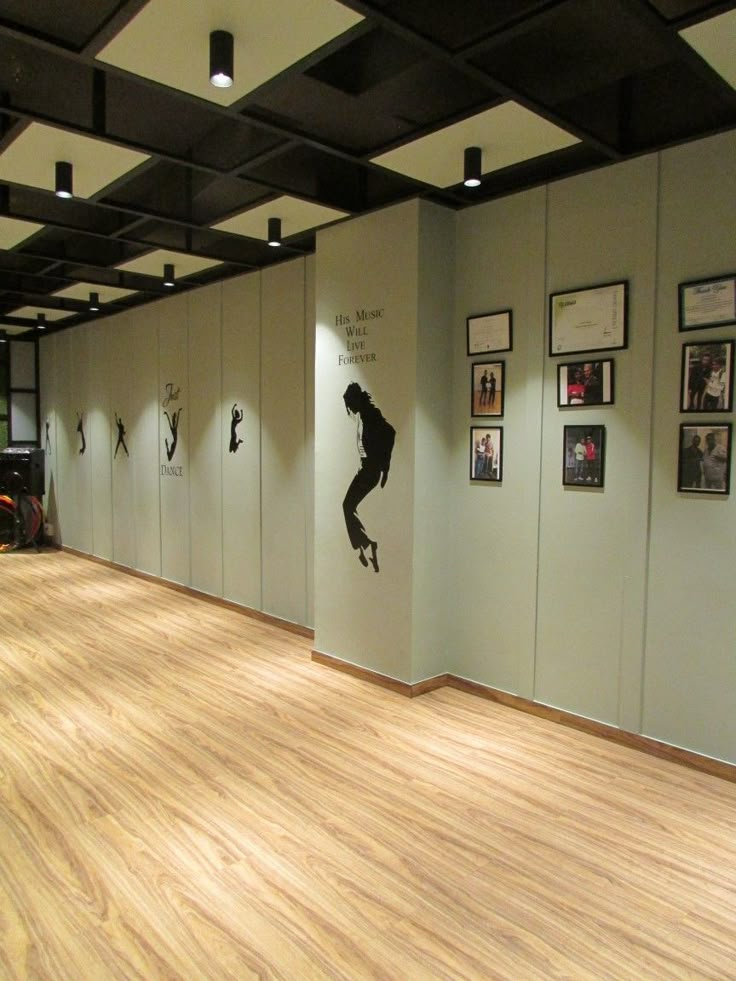 Both times I received certificates.
Both times I received certificates.
27,000 R
I spent on additional training in pole dance
There were no competitors in my city at that time. We had only seven dance studios: three taught street dances like hip-hop, breakdancing and locking, the rest were aimed at children, taught modern and classical choreography and ballroom dancing. In fitness clubs, they mainly taught go-go and oriental dances. I decided to take a risk and become the pioneer of a new direction in the city.
First Studio: 3m Ceilings and a Stolen Idea
In May 2012, I started looking for a space to launch the project just in time for the start of the school year. I discussed all the details like equipment, technical issues and the learning process with the directors of the studio in Yekaterinburg when I studied half-dance there.
The room had its own requirements:
- Ceiling height - at least 3 meters, so that poles - pylons can be installed.
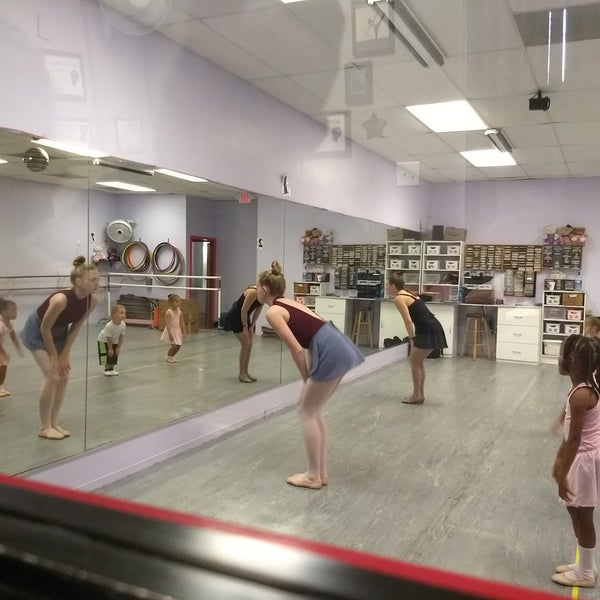
- The ceiling slab must not be hollow, but must be at least 30 centimeters thick. The pylons must withstand a weight of up to 150 kg. If the ceiling is thin, the mount simply won't hold up.
- Rent — up to 15,000 R per month. In my experience, it would be difficult to cover the amount higher with the number of subscriptions, and if something happens, I could find that kind of money to cover a failed month.
/dogovor-arendy/
What should a business consider when signing a lease
Not all landlords agreed to damage the ceiling, the thickness of the ceiling was not always suitable for my needs.
The deal failed with the first hall. Due to the peculiarities of the ceiling, an additional structure had to be made there. The landlords agreed to do it themselves, and I would have paid for the work, but at first they doubled the price, then increased it even more, and then refused to cooperate at all.
A few months later, I found out that they wanted to steal my idea and open a similar studio.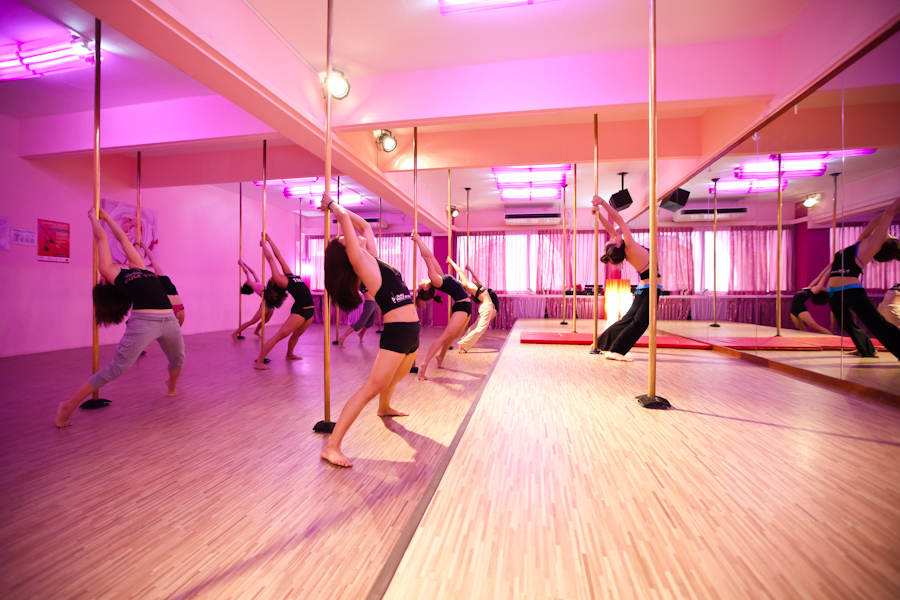
Fortunately, their attempt failed: they could not find the appropriate teachers, because only I had such a certificate and knowledge in the city. But the problem with the hall remained: I was already promoting a group on Vkontakte and recording for the academic year. The students were actively recruiting, but I had nowhere to receive them.
I couldn't just make excuses by telling a story about unscrupulous landlords and kept looking everywhere I could: on websites, in local newspapers, driving around the city, looking for signs about rent.
As a result, the opening had to be delayed for two months: due to the specifics and restrictions on the rental price, the premises had to be looked for for almost six months. A former colleague helped: he learned from mutual friends that I was opening a studio, and his friend was just renting out a small hall.
We have agreed that part of the repair costs will go towards rent. I did a facelift in a few days and bought equipment.
I did the repairs on my own — for example, I painted the walls myself. If it was necessary to attach pylons and arrange heavy furniture, then she called for help from familiar men. They spread linoleum on the floor and nailed it in places.
Pylons are installed quite quickly if there are no problems with the ceiling and floors: you need to drill a hole, attach the pylon, level it, and that's it. Detailed installation instructions are always attached to the pylons. We set up the first pylon in 2-3 hours, the rest were faster.
An important part of the cost for a dance studio is mirrors. They were made in a local company in my city to order. I ordered one-piece large mirrors to the floor. Due to the large size, there were difficulties with transportation: a special vehicle with equipment for transportation was needed - plastic windows are usually carried in such vehicles.
They could not be moved or installed by one person, and they could hardly fit into the aisle. Plus, there were difficulties with fixing: if the wall was not perfectly even, then any slightest deviation could be seen in the mirror - at the joints, in reflections.
Plus, there were difficulties with fixing: if the wall was not perfectly even, then any slightest deviation could be seen in the mirror - at the joints, in reflections.
But the mirrors themselves were excellent, and I then transported them to new studios, breaking the part along the way and ordering new ones. As a result, my friends came up with the idea of custom-made huge plastic frames, like for plastic windows, where we inserted mirrors. So they were easier to transport and install.
For a pylon, a hole is drilled in the ceiling slab and fixed with screws. If the ceiling is not strong enough, the pole may come off during the trick and cause serious injury. Source: Pole4you This is what the studio looked like after the repair - huge mirrors were made to order at the local production At the same time I registered an LLC, I was the sole founder. I chose LLC because I planned to open branches in other cities - it seemed to me that it would be easier to do this than with an individual entrepreneur.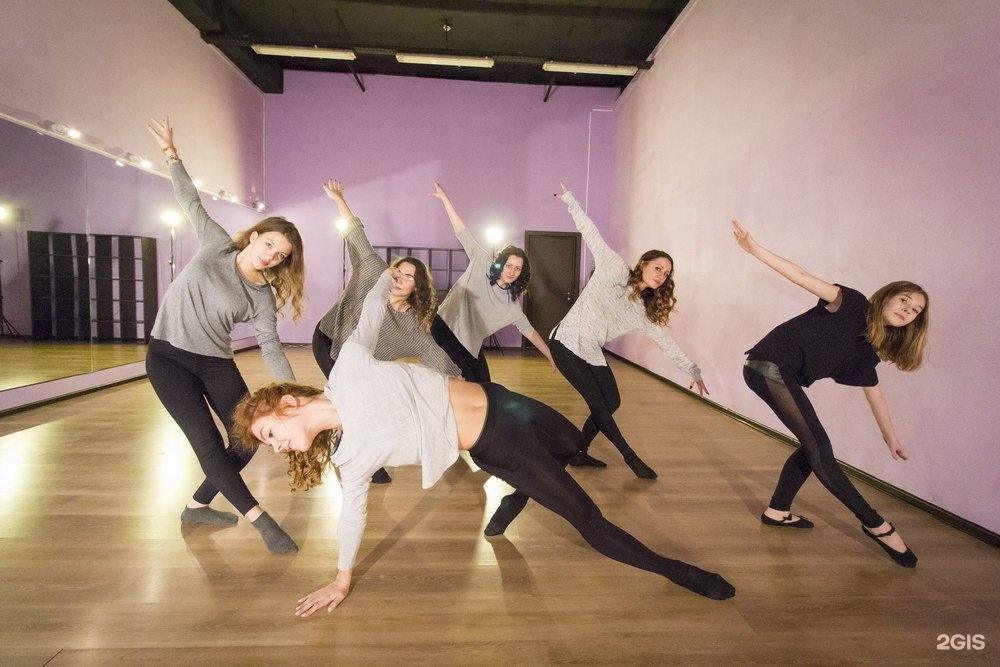
By the way, it would be better if I opened an IP. The LLC was not useful to me later, I had to close it, and this is more difficult than an individual entrepreneur. In the second hall, I had to negotiate with the landlord so that he would give me a legal address. He reluctantly agreed, and I had to pay for it. The LLC also needs to submit a large number of reports, but I did not have the necessary accounting knowledge. Until I hired an outsourced accountant, there were delays in submitting reports and fines.
/ooo-na-divane/
How to register an LLC from home
I opened the studio at the beginning of November. I was ashamed in front of the students, but they waited and almost all of them came.
To open a studio, I took out a loan, so after the opening, most of the proceeds went to payments to the bank - 20,000 R per month. For the entire time the business has been running, I have taken several loans, on average, 30,000-50,000 R for a period of 3 to 5 years.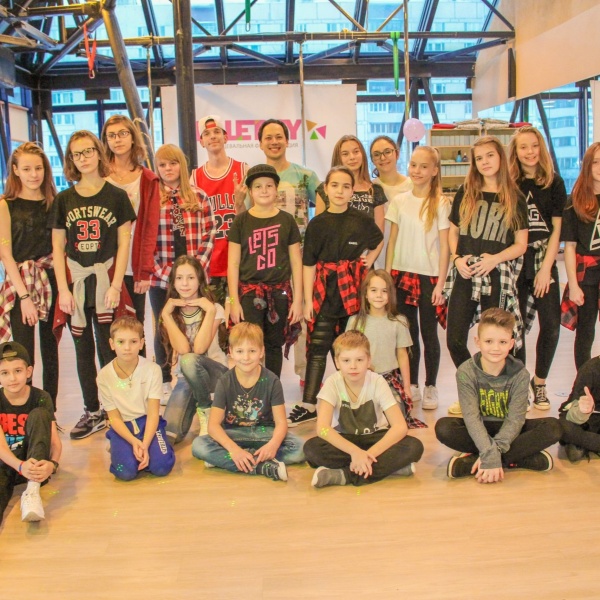 The total amount of all loans was 200,000 R.
The total amount of all loans was 200,000 R.
Expenses for opening a studio in 2012 — 200,000 R
| Equipment: mirrors, pylons, fixtures | 95 000 R |
| Cosmetic repairs: wall painting, flooring | 53 000 R |
| Training and professional development before the opening of the studio | 27 000 R |
| Bathroom renovation | 14 000 R |
| Music center, locker room furniture, hangers at the entrance and other small items | 11 000 R |
Equipment: mirrors, pylons, mounts
95 000 R
Cosmetic repair: wall painting, floor covering
53 000 R
Training and advanced training before opening the studio
9000 000 RSanuzla repair
14,000 R
Music center, locker room furniture, hangers at the entrance and other trifles
11,000 R
How much did I earn
The first studio was small — there were only three pylons, and I could not teach more than an hour six or seven people.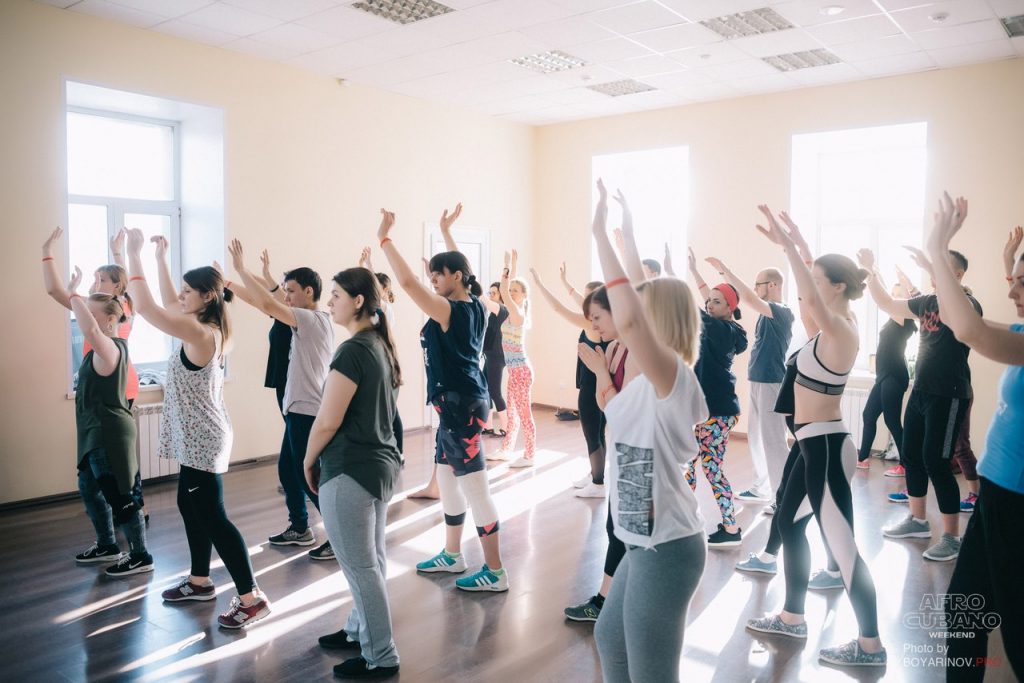 This allowed the studio to earn an income of about 65,000 R per month.
This allowed the studio to earn an income of about 65,000 R per month.
There were two main sources of income: group and personal lessons.
Group lessons were by subscription only. The most popular, for eight classes a month in the evening, cost 1800 R. Evening is considered the most profitable time, because more people come. There was a small discount for the daytime.
Personal lessons were by subscription and one-time. A subscription for eight classes cost 3000 R, a one-time visit - 500 R. At first, the income from personal classes was small: with group classes, I did not have time to take more students. When more teachers appeared, I could only go to personal classes, and the revenue from them reached 30,000 R per month.
A regular waste was the purchase of alcohol: it is rubbed on the surface of the pole to remove dirt and sweat and improve adhesion to the skin. Alcohol had to be bought in canisters from doctors I knew - we needed a concentration of at least 70%, and this is not for sale in the public domain. It took 2000 R per month.
It took 2000 R per month.
The largest turnover was from the spring of 2013 to the spring of 2014: 140,000-170,000 rubles. And the largest net profit was about 60,000 rubles.
Revenue for December 2012
| Subscription for 8 lessons | 27 000 R |
| Subscription for 12 lessons | 12 500 R |
| Subscription for 16 lessons | 12 000 R |
| Day group | 8000 R |
| Personal lessons | 5000 R |
| Total | 64 500 Р |
Subscription for 8 lessons
27 000 R
Subscription for 12 classes
12 500 R
Subscription for 16 classes
12 000 R
Day group
8000 8000 °
Personal classes
9000 5000 5000 °64 500 500 500 500 500 500 500 500 500 500 500 500 500 500 500 500 500 500 500 500 500 500 500 500 500 500 R
Studio expansion: moved four times in five years
The studio lasted only six months in the first building: the landlord changed plans and we had to move out.
I already wanted to move out myself, because the room was small and I could not teach more than seven people in an hour. To support myself, support the studio and repay the loan, I needed to sell 20-30 subscriptions a month. If I bought less, I no longer had enough money for all expenses. It was necessary to expand and increase income, and for this, another room was needed. In just five years, we moved four times - each time to a new area of the city.
In March 2013, I took away the mats and the music center and moved to another room - almost three times bigger than the old one. I had to take out a loan again, because the old pylons did not fit in height. For 150,000 R I bought five new pylons and changed the flooring. The move cost 300,000 R, including rent for two months.
300,000 R
I spent on moving
There were no problems with the purchase of poles: even then in Russia there were several specialized companies that produced professional poles for dance studios.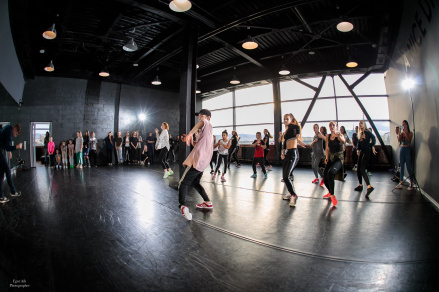 The best and most famous is located in St. Petersburg - Pole4You. You place an order on the website, choose a convenient delivery method - I had "Business Lines" - and they send it. Two weeks later I received the pylons.
The best and most famous is located in St. Petersburg - Pole4You. You place an order on the website, choose a convenient delivery method - I had "Business Lines" - and they send it. Two weeks later I received the pylons.
| Lesson in the second hall after renovation. The floor had to be re-laid - it should be soft high-quality linoleum so that the students do not hit their knees and do not get hurt when they fall | This is the third hall we have moved to. There I seriously invested in repairs, laid carpet on the floor, repaired the locker room and shower for students and teachers |
 In the third hall, they made a bright panel on the wall. I was the first in the city to start teaching half-dance, so this particular dance is depicted on the panel
In the third hall, they made a bright panel on the wall. I was the first in the city to start teaching half-dance, so this particular dance is depicted on the panel The rent of the premises was three times higher than the previous one, the communal apartment was included in the price. In addition, you had to pay for security. All together it cost me 50,000 rubles.
There were no cheap premises, so the choice was either to continue or give up the dream. I decided to take a risk, and the risk was justified: the business grew rapidly. After the move, we already taught 10-12 students per hour and earned an average of 150,000 R per month.
How I built my work with teachers
I recruited teachers from former students: I chose those who had the potential for this or that direction, loved classes and knew how to communicate with the team. There were three main teachers, I took one or two more for additional directions like go-go.
She tried to make the work of teachers a pleasure: she gave salaries higher than the market, bonuses, paid for their education and advanced training, gave part-time jobs. The average salary in the city for teachers at that time was 2500-4000 R per month for 2-3 lessons per week. I paid 7000-8500 R, if I gave out a bonus, then it came out about 10,000-11,000 R. I gave out bonuses to those who attracted new students to their classes and, most importantly, kept new students. Or those who came up with something interesting like New Year's contests.
The average salary in the city for teachers at that time was 2500-4000 R per month for 2-3 lessons per week. I paid 7000-8500 R, if I gave out a bonus, then it came out about 10,000-11,000 R. I gave out bonuses to those who attracted new students to their classes and, most importantly, kept new students. Or those who came up with something interesting like New Year's contests.
Teachers went to Yekaterinburg to improve their qualifications. It cost me 500-3000 R per person. I myself taught until the fall of 2013, and then I decided to leave only to manage the studio, since classes took time and effort.
Promotion: mostly word of mouth worked
The very first I had a group in Vkontakte — I started recruiting the first students even before the opening of the studio from former students. When I started to develop the group, I asked my friends to join it and make reposts, every day I posted posts, photos and videos to attract people. About a year later, the group had 1000 subscribers, and since 2013 it began to develop actively.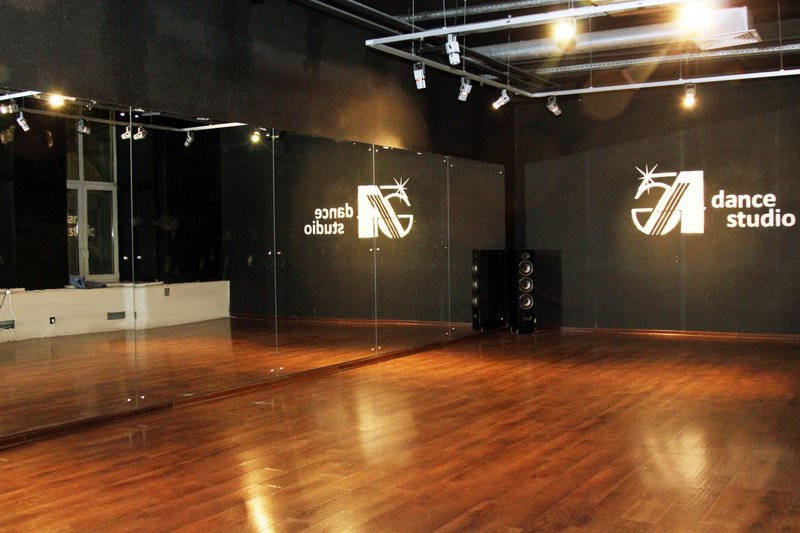
The popularity of the project was also influenced by the uniqueness of the project: half-dance in the city was a new exotic direction, people from the media sphere became interested in this.
/marketing-ads/
Basics of marketing for business: advertising
My main clients were girls 25-35 years old with an average income and a little higher.
Here's what I used to promote.
Regularly updated accounts on Vkontakte and Instagram. I photographed a large, beautiful, spacious hall with high pylons, people reacted and signed up for classes. We wrote about the studio every day, posted posts, asked all our acquaintances and friends to tell about us.
Involved in the promotion of the community of teachers. In the new building, I already taught with three coaches, whom I found among former students. They posted recruitment announcements for groups on their social networks, made photo sets and videos for Instagram.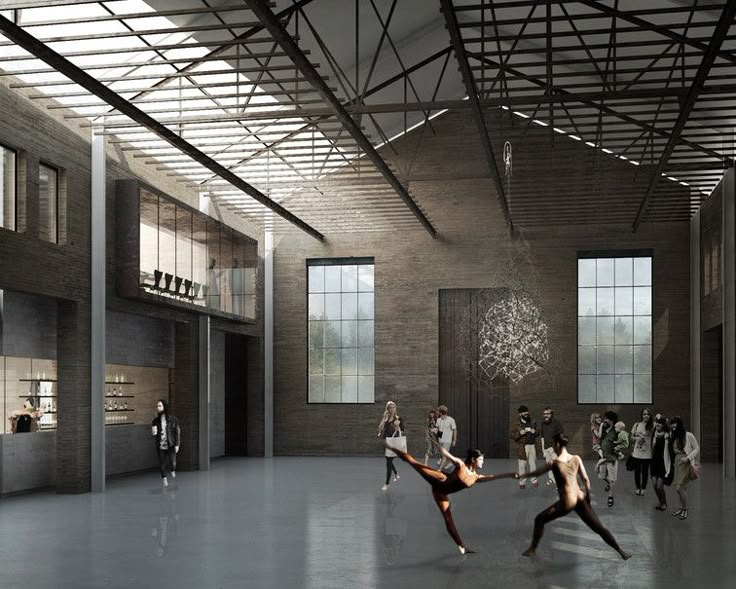 Friends of acquaintances came - it turned out such a word of mouth.
Friends of acquaintances came - it turned out such a word of mouth.
Made a website for the studio. It cost about 13,000 R. I made a beautiful clip on the main page, added photos, information about teachers and a class schedule. After the site appeared, calls began to arrive twice as many.
13,000 R
I spent on the site
I invited photographers and cameramen to work on a barter basis. The direction was new in the city, so they were interested in working with us free of charge. Sometimes they did provocative reports like "Half-dance: striptease or art?", but in any case, publications brought us fame. There were about 15 permanent photographers.
Photos from the performances of studio teachers at concerts and events. These are dances on canvases. Photo: Dmitry Kaiser| An example of a photo shoot that we came up with with a photographer. Photo: Dmitry Kaiser | For them, it was new and unique content that no one else had done in the city.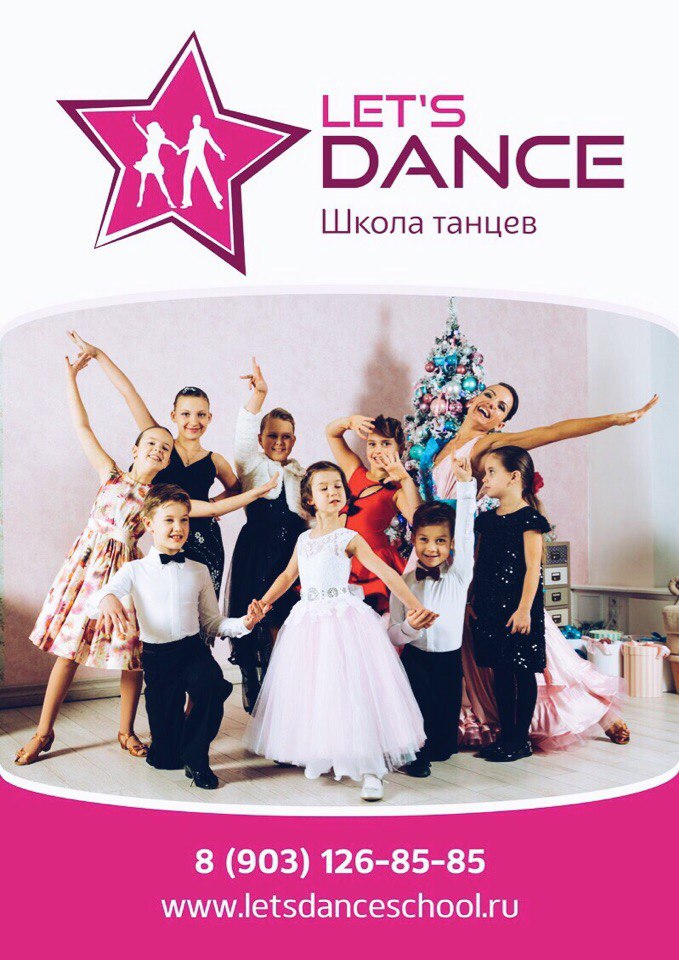 Photo: Dmitry Kaiser Photo: Dmitry Kaiser |
Posted ads about the studio. I have published on local sites, 2GIS, Flampe and Avito. She advertised several times through Yandex Direct. Local sites and 2GIS did not give any results, but promotion through Yandex Direct and Google Ads worked.
I was engaged in promotion, at the very beginning I asked a friend to figure it out and help set up advertising. Usually, new campaigns were launched before the season - at the end of summer to attract students for the new school year, and at the end of winter to attract people for the spring. The advertisement lasted 1-2 weeks, the average budget per campaign was 7000-15000 rubles. We did not have to negotiate with them: they themselves found out that a new dance style was being taught in the city, and they wanted to talk about it.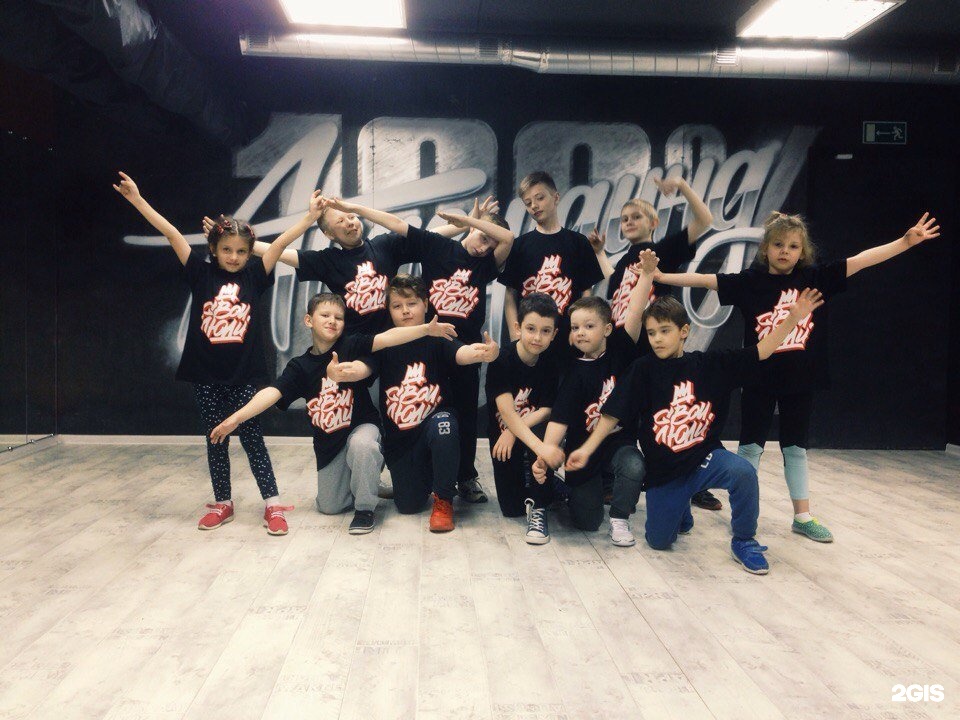
Development of the studio: new directions in the city
Everything was spinning at breakneck speed. Soon I brought new dance styles to the city: aerial gymnastics on canvases and acrobatics on the ring. This trend had already begun in Yekaterinburg, and I knew that it would soon come to our city. It was necessary to have time to be the first.
At first, all this was not in demand, because it was hard and difficult for the students. It is very painful to practice on the ring and canvases: after the lesson there are huge bruises from hoops and burns from the fabric.
Imagine: you are hanging in the air and you are being held by a rag digging into your body.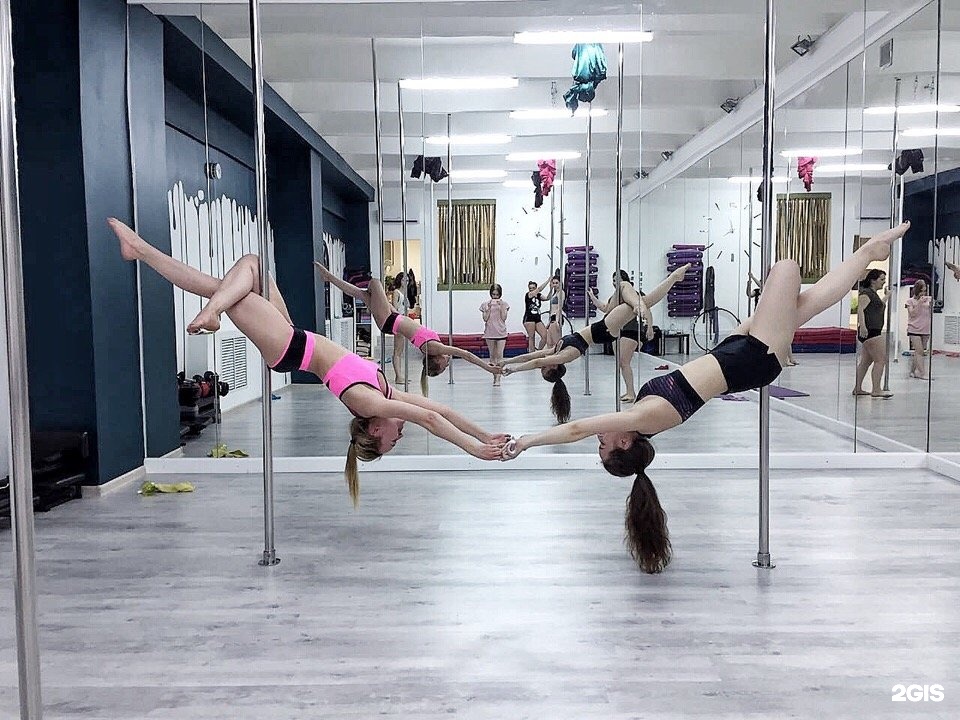
But then the direction unfolded: beautiful photosets and clips with dances on canvases appeared in all social networks, competitions began to be held in cities, dance studios made enticing advertisements.
I was the first to develop this direction in the city, so the students immediately came to me. Once I organized a competition to draw attention to dancing on canvases: for the best photo on canvases, I gave a subscription to eight classes in the studio.
From the outside, these dances seem dangerous, but there have never been any accidents in my classes. Classes are necessarily held with special mats that soften the blows if someone suddenly falls. Teachers are trained and know how to avoid injuries. Before the start of classes, my clients got acquainted with the instructions for safety rules and signed it. Nevertheless, adults understood their responsibility, no one took risks once again.
For classes on canvases and rings, you need to buy additional anchors - these are such fixtures in the ceiling - and soft mats on the floor for safety In general, there are few incidents in this area. I heard only about one case: in Yekaterinburg, a girl flew off a pylon and broke her arm. But it was a pylon of a different design - a portable one that stands on the podium. It is less stable than a pylon bolted to the floor and ceiling in a studio.
I heard only about one case: in Yekaterinburg, a girl flew off a pylon and broke her arm. But it was a pylon of a different design - a portable one that stands on the podium. It is less stable than a pylon bolted to the floor and ceiling in a studio.
I first looked for teachers at the local circus school, we have a pretty strong one. But we worked with them for a couple of months and did not agree, so I sent several students to study in Yekaterinburg at my own expense - so that they could conduct classes.
44,000 R
I spent on the introduction of a new direction
The introduction of new directions cost 44,000 R: 38,000 R was spent on canvases, anchors and rings, another 6,000 R were spent on training teachers.
Children's dance school and missed grant
My students and parents of former students regularly asked to open dance classes for children: variety dances, stretching, modern choreography.
This would help expand the business and reach a different part of the audience.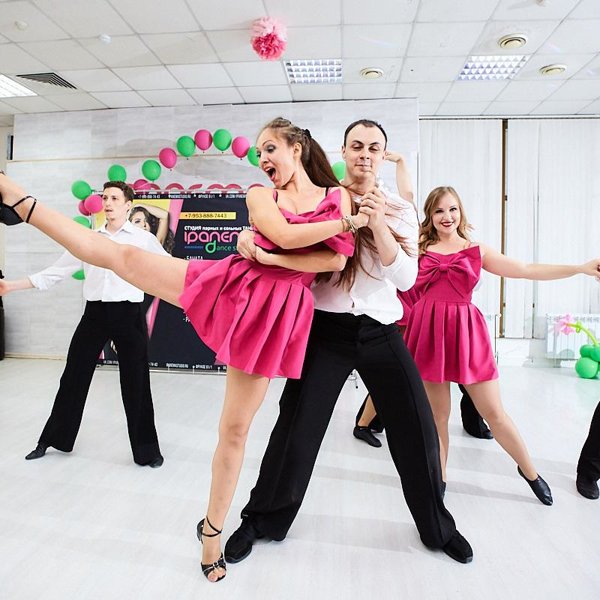 I knew for sure that the project would be successful: I had already worked as a choreographer with children aged 6-7, I had a reputation and potential clients.
I knew for sure that the project would be successful: I had already worked as a choreographer with children aged 6-7, I had a reputation and potential clients.
There was no free money to create a children's school, so I decided to look for a grant and found a suitable one - the competition of the Entrepreneurship Fund. To participate in it, one had to take courses and defend a business plan.
I did not learn anything new during the courses, since I already had an economic education. The next step was to write a business plan and submit an application. I asked for money not just for a children's school, but for business development.
I collected a package of documents: statutory documents, certificates of no debts to government agencies, a certificate of completion of courses, several questionnaires from the foundation itself, a business plan and checks confirming the costs of the project - 15% of the requested amount.
300,000 R
I got to the children's dance school
As a result, I won the competition and received 300,000 R.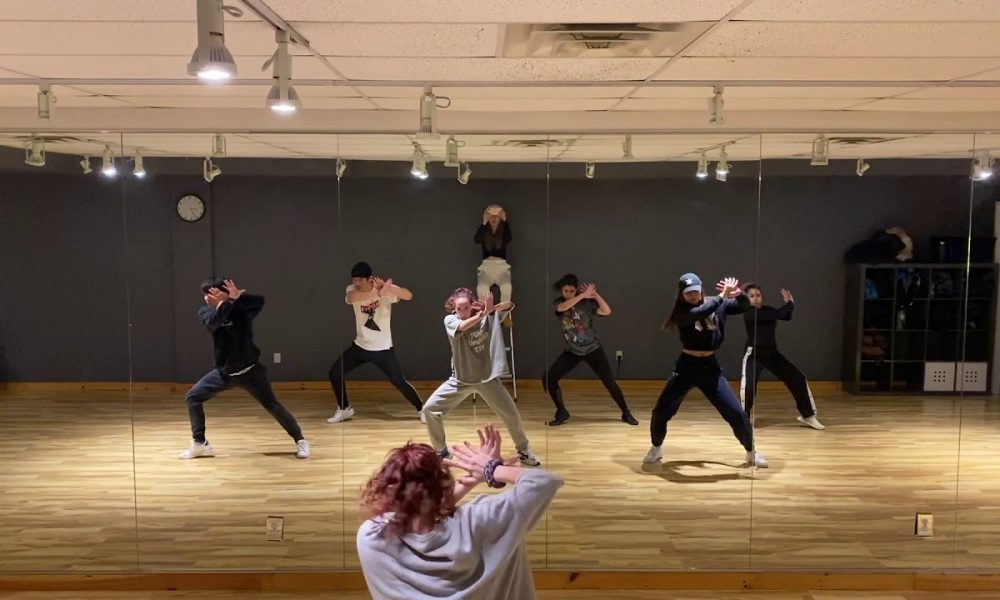
Everything went well, but again there were difficulties with the premises. I needed a hall with an area of 50 m², and these cost 50,000-100,000 R, and not in the center, but on the outskirts of the city. I couldn’t take on such obligations and pay more than 100,000 R for the premises of an adult and children’s studio: I had loans, and if something went wrong, no one would help me.
I tried to search for premises through state auctions and the city administration, I turned to the mayor for help. She offered to do free classes for children from orphanages or large families. But no one came towards me. We have a small city, culture and education are not particularly developed here.
There are factory workers in my city who prefer to drink and watch TV after work.
It was not accepted to get involved in something or have a hobby, so it is difficult to develop in a creative environment.
As a result, the school could not be opened. I spent a grant on an existing studio, and the foundation accepted it, because I originally asked for money to expand and develop the business. So the grant was well spent.
I spent a grant on an existing studio, and the foundation accepted it, because I originally asked for money to expand and develop the business. So the grant was well spent.
Despite the history with the grant, 2014 was a successful year: for the first time we held the first major dance event in the city — a pole dance competition. At the same time, it became possible to open branches in other cities: I found two halls and a representative, and I could launch three schools at once. But she was afraid of responsibility and put it off for the future.
/pozhaluite-grant/
How I got a grant for 100,000 R
I was afraid to carry such a large financial burden on my own, especially the simultaneous payments for four rents. I also wouldn’t have had enough time to manage all the studios myself, and there was no one to delegate.
If I created a network of dance studios, it would raise the status of the project, bring in additional income and allow the sale of the franchise to start. In the future, I did not have such opportunities.
In the future, I did not have such opportunities.
Went into the red and started again from scratch
In the winter of 2014, things went badly. At first I thought that it was just the off-season, winter and summer in this area are disastrous months. I had a small airbag with which I closed the holes. But in the spring it ended, but the situation did not get better, and the business went into the red.
Just then, the financial crisis happened, and it hit my city significantly: salaries dropped a lot, people began to save money - and first of all on hobbies. The city has a poor population, business is not doing very well, and financial shocks have a strong impact.
It seems to me that my business went into the red mainly due to two reasons:
- Some of the teachers turned out to be unscrupulous - they conducted additional classes in the studio past the cash desk. Or they were trained at my expense, and then left and poached students.
 I noticed this just in the fall of 2013 and in the winter of 2014, I was losing 20,000-35,000 rubles a month because of this.
I noticed this just in the fall of 2013 and in the winter of 2014, I was losing 20,000-35,000 rubles a month because of this. - Clients asked to extend their subscriptions in advance, but never brought money. In the winter of 2014, there were a lot of such cases - about 9— 12 people per month.
As a result, the studio's income fell from 110,000 to 60,000 rubles. I was forced to fire unscrupulous teachers and could no longer pay rent.
I had to move from a good place to nowhere, and the studio stopped working for almost a year - until February 2015.
Despite the closure, I believed in my project and had no idea what else to do. At that moment, the studio seemed to be the work of my whole life. In January 2015, I saw an advertisement for the delivery of a building with four-meter ceilings and two large halls.
By that time, competitors had already begun to appear in the city, who also taught half-dance. Half of my students and all the staff went to them - this time no one expressed loyalty and did not wait for me to solve problems.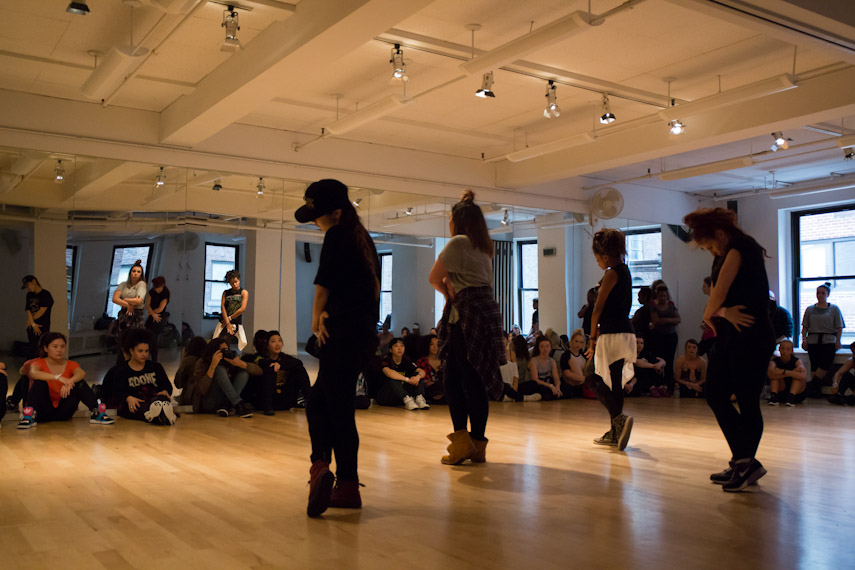 But the description of the new premises hooked me, and I decided to open again. She recruited teachers from her former students, and also looked for clients through social networks.
But the description of the new premises hooked me, and I decided to open again. She recruited teachers from her former students, and also looked for clients through social networks.
The repair of the hall took several months, so the studio opened only at the end of March. With difficulty, but I brought the business to its previous level, launched joint courses with teachers from other cities. I spent 285,000 R on the opening - these are the costs of repairs and rent for three months. I borrowed part of the amount from a friend, I earned part myself - at night I wrote diplomas in economics for students.
285 000 Р
I spent on opening a new studio
How I decided to sell the studio two months. I managed to pay off debts for repairs and reach a stable profit.
In 2016, a lot has changed in my life. I met my future husband, we began to live together, and then we decided to move to another city. The business was irrelevant for me, and I put the studio up for sale.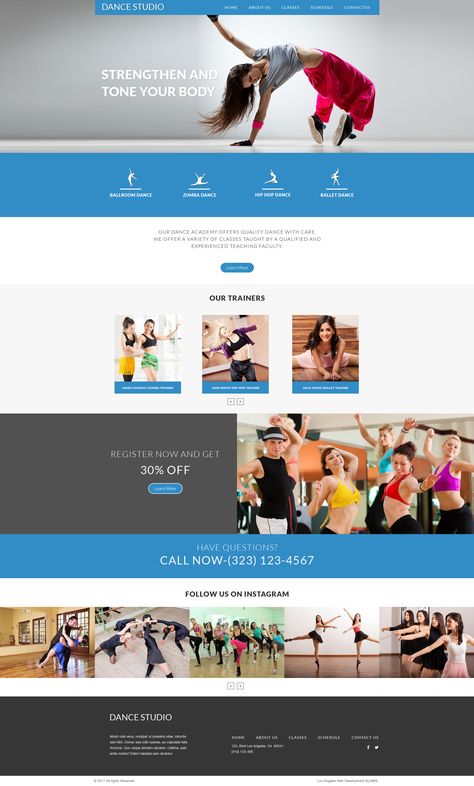
It was planned that it would be bought by one of the old students who have been in the studio since its foundation. And so it happened. We negotiated with one of the students for almost a month. By that time, I had already closed my LLC and was about to move. Therefore, I sold the studio to her as an individual with the transfer of all rights, property and equipment for a symbolic 100,000 R - this is how much the equipment of the hall cost, taking into account wear and tear.
After the sale, I introduced the new owner of the studio to the staff and students, completed all personal affairs and never returned to this topic.
Expenses for December 2016
| Salary | 25 000 R |
| Premises for rent | 14 000 R |
| Drinking water and disposable cups | 2000 R |
| Alcohol | 2000 R |
| Utility payments | 1500 Р |
| Total | 42 500 Р |
Salary
25 000 R
9000 РWhat mistakes affected the development of the business
Despite the successful start of 2014, I made mistakes that slowed down the development of the business.
Did not conclude agreements with teachers, because I relied on their integrity and honesty. As a result, they went through training that I paid for, then went to competitors and took students away. To prevent this from happening, I needed to legally fix the training and confidentiality conditions. For example, to prescribe in the contract that the teacher is obliged to work in the studio for a certain period after completing the training or pay its cost, otherwise - a fine.
Gave the keys to the studio to all teachers. I did not follow what the teachers were doing in the studio outside of class, and someone began to conduct classes past the cash register. Usually, an administrator works in studios, and only he has the keys: he opens and closes the studio, marks clients, and monitors subscriptions.
Made the salary too high in the city. I could save about 15,000 R per month on teachers' salaries and spend this amount more appropriately - on advertising or attracting additional teachers during the daytime and weekends.
Didn't introduce strict visiting rules and didn't set up an accounting system. I went forward when the students asked to renew the subscription on credit or pay in installments. Because of this, I lost some of the money: clients went to classes, but never brought money for them, and I could forget who did not pay. If we had a CRM or other customer accounting system, these problems could have been avoided.
Used the premises inefficiently. Instead of opening a second hall and teaching other dance styles, I made a dressing room and an office for employees in its place. In addition, it was possible to sublease the premises in the morning and afternoon, when there were no classes. I was offered this, but I refused. The studio could have a large sum from the evening for the sale of subscriptions, so you would have to keep track of those who rent the hall for sublease - either hire an administrator or do everything yourself. There was no worker for a nominal fee, and I didn’t have enough time.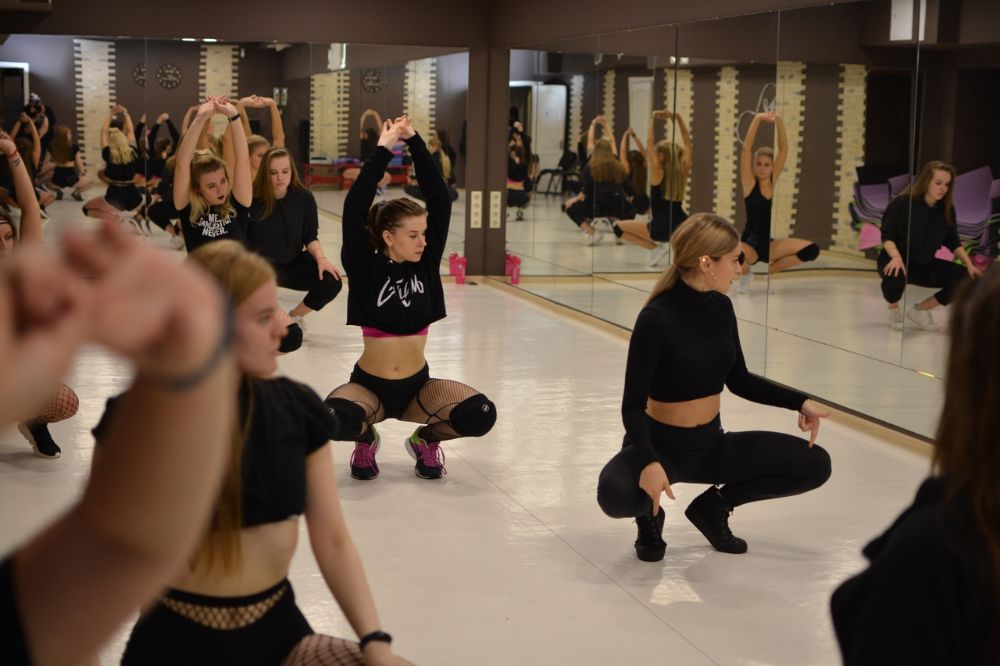
Did not use all advertising tools . It was possible to attract well-known personalities in the city for cooperation, place booklets and business cards in popular places, launch targeted advertising and more actively maintain a page on Instagram. When I reopened the studio, I no longer invited the press and did not arrange master classes, and as a result, they began to forget about the school, especially since three competitors appeared.
Made hasty decisions. The third move was unsuccessful: the studio was in an area difficult to reach by public transport, too much money was spent on repairs, and it was difficult to get along with the landlords. For example, they promised to install batteries for three months and started working only when I threatened to leave. All agreements with landlords had to be fixed in writing in the contract, and not limited to verbal promises.
Invested in an ad that didn't work.